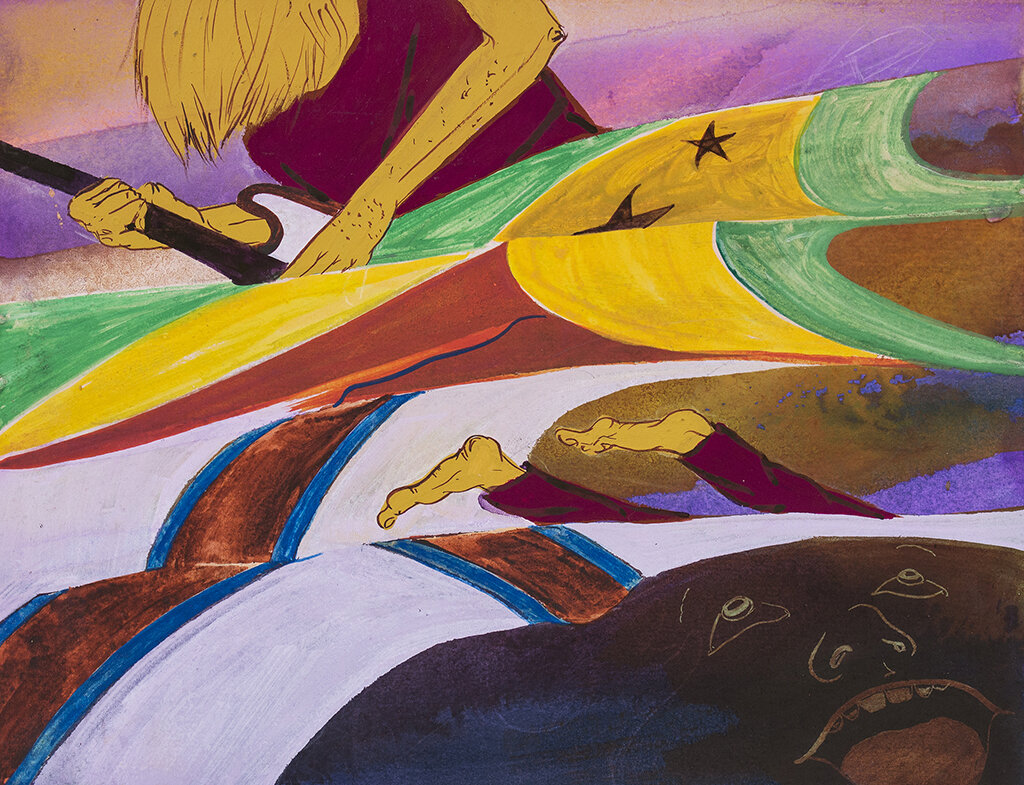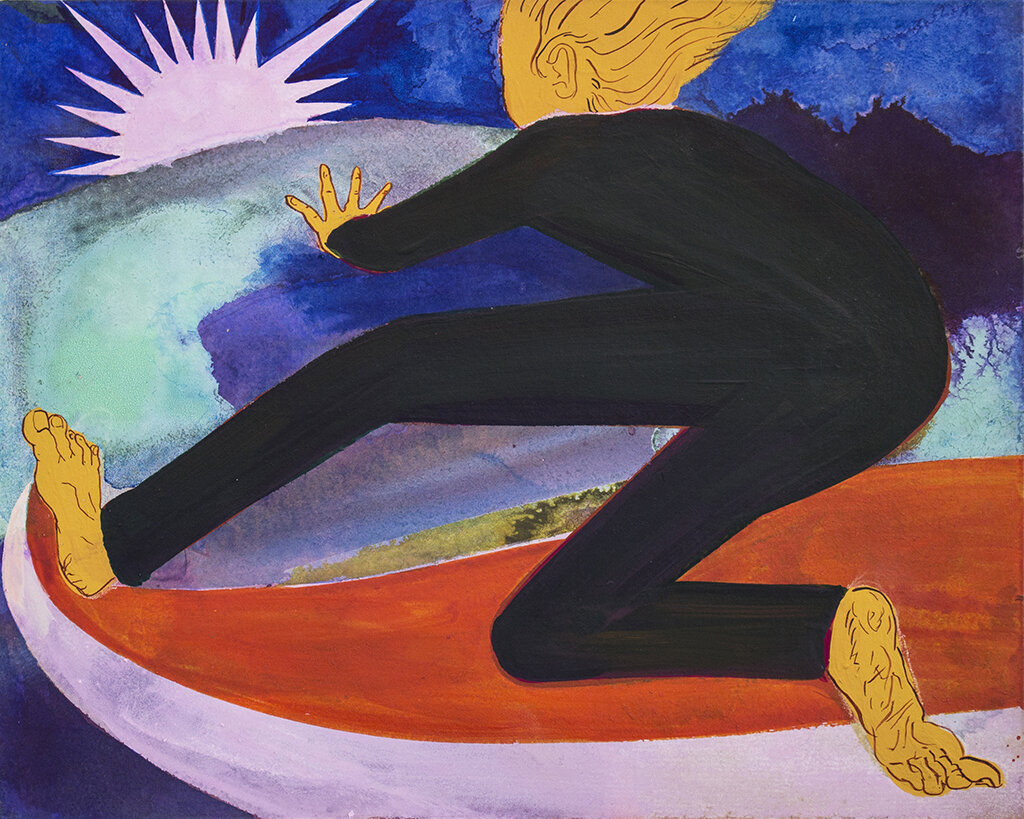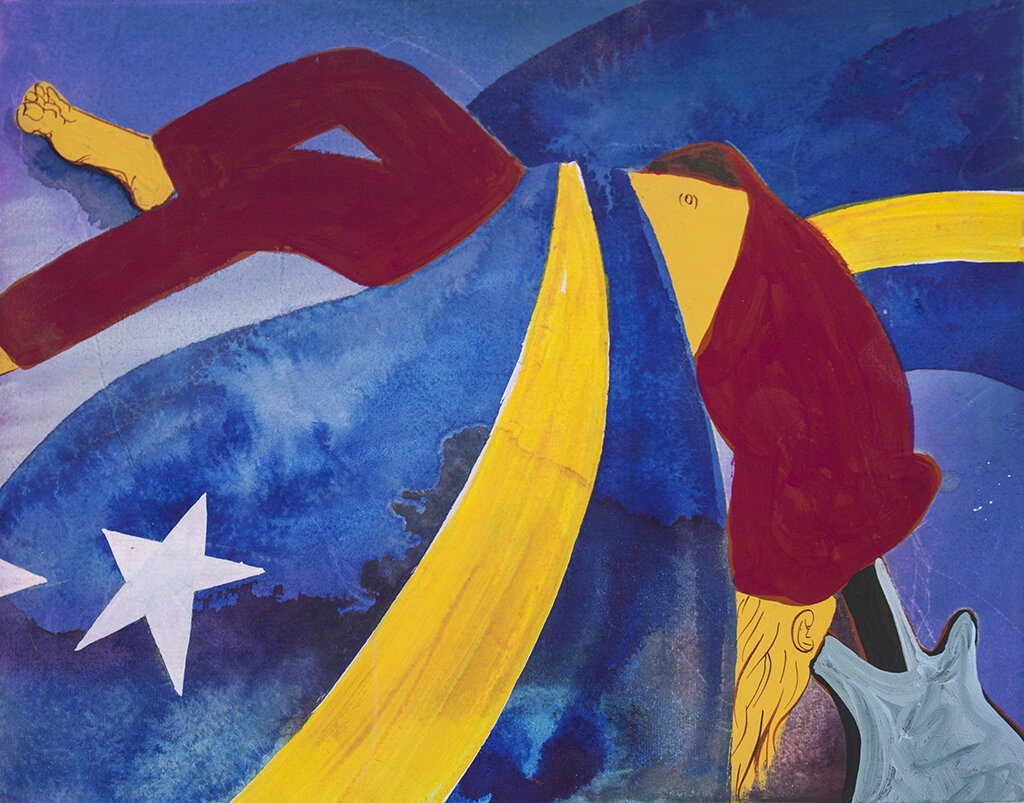The Ship Named Atlast
and other stories
The Ship Named Atlast is a story told through prose, paintings, and installation. Its first iteration was as a solo exhibition at the Lightwell Gallery at Oklahoma University and then it traveled to The Anderson Gallery at Virginia Commonwealth University.
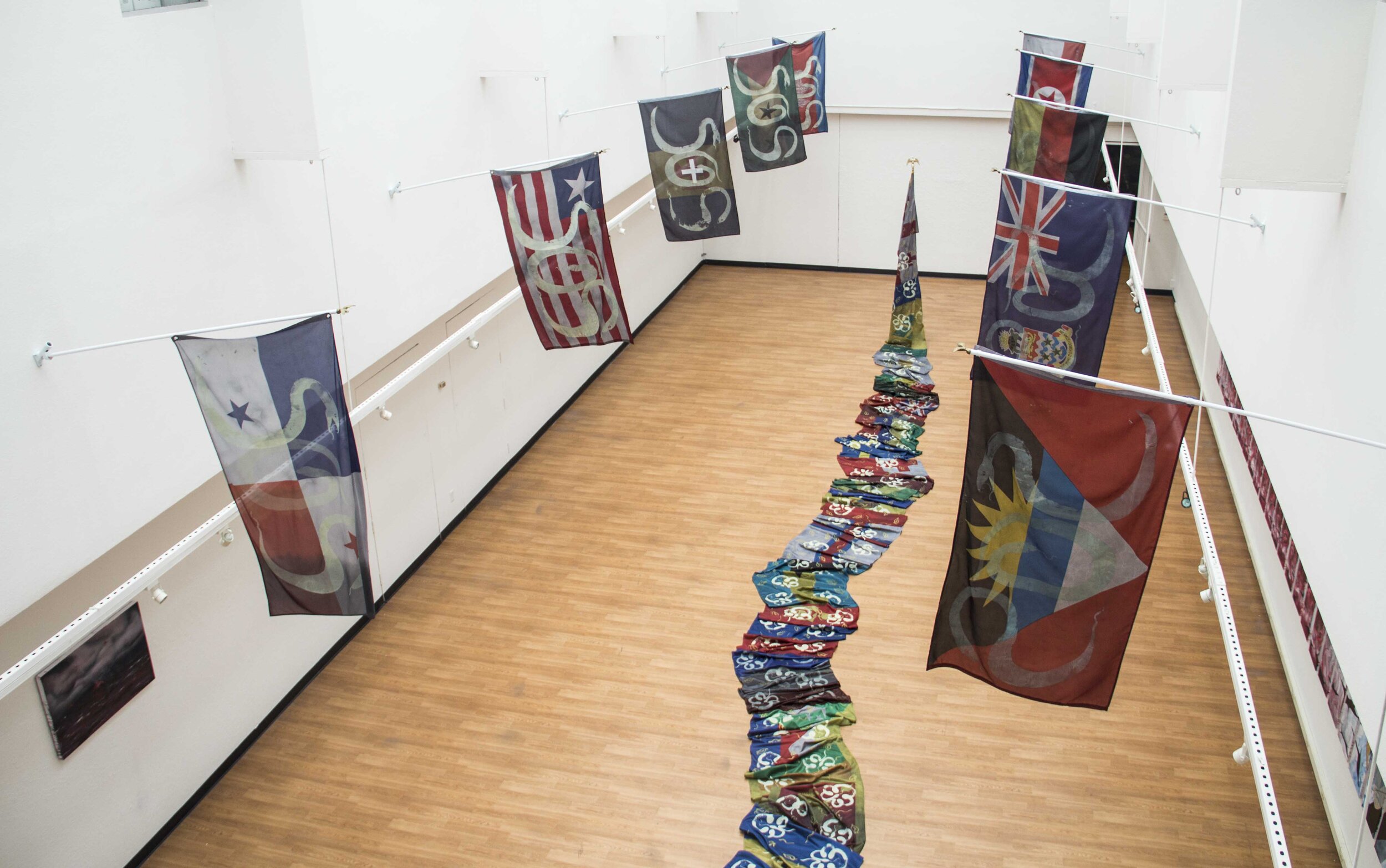
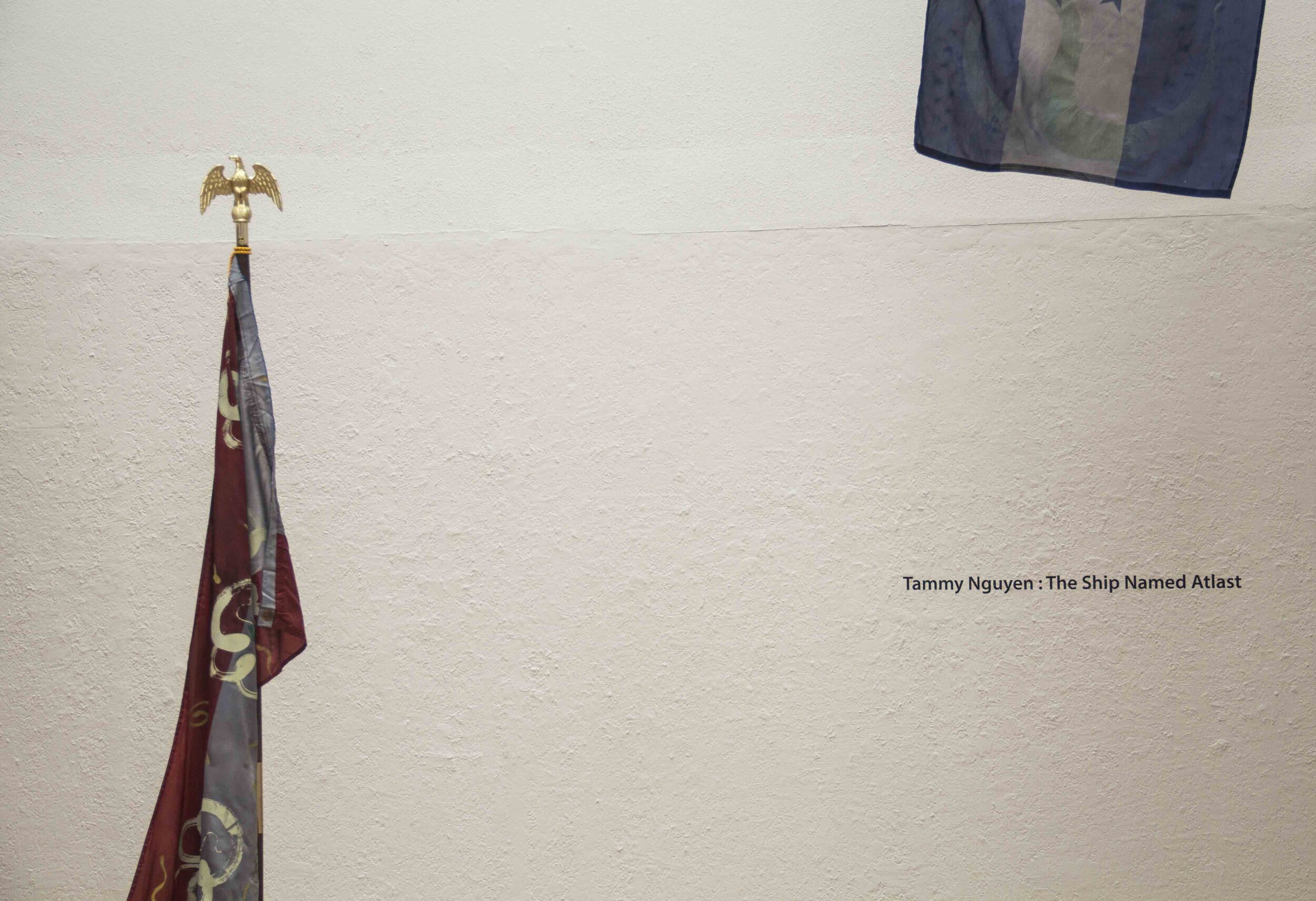
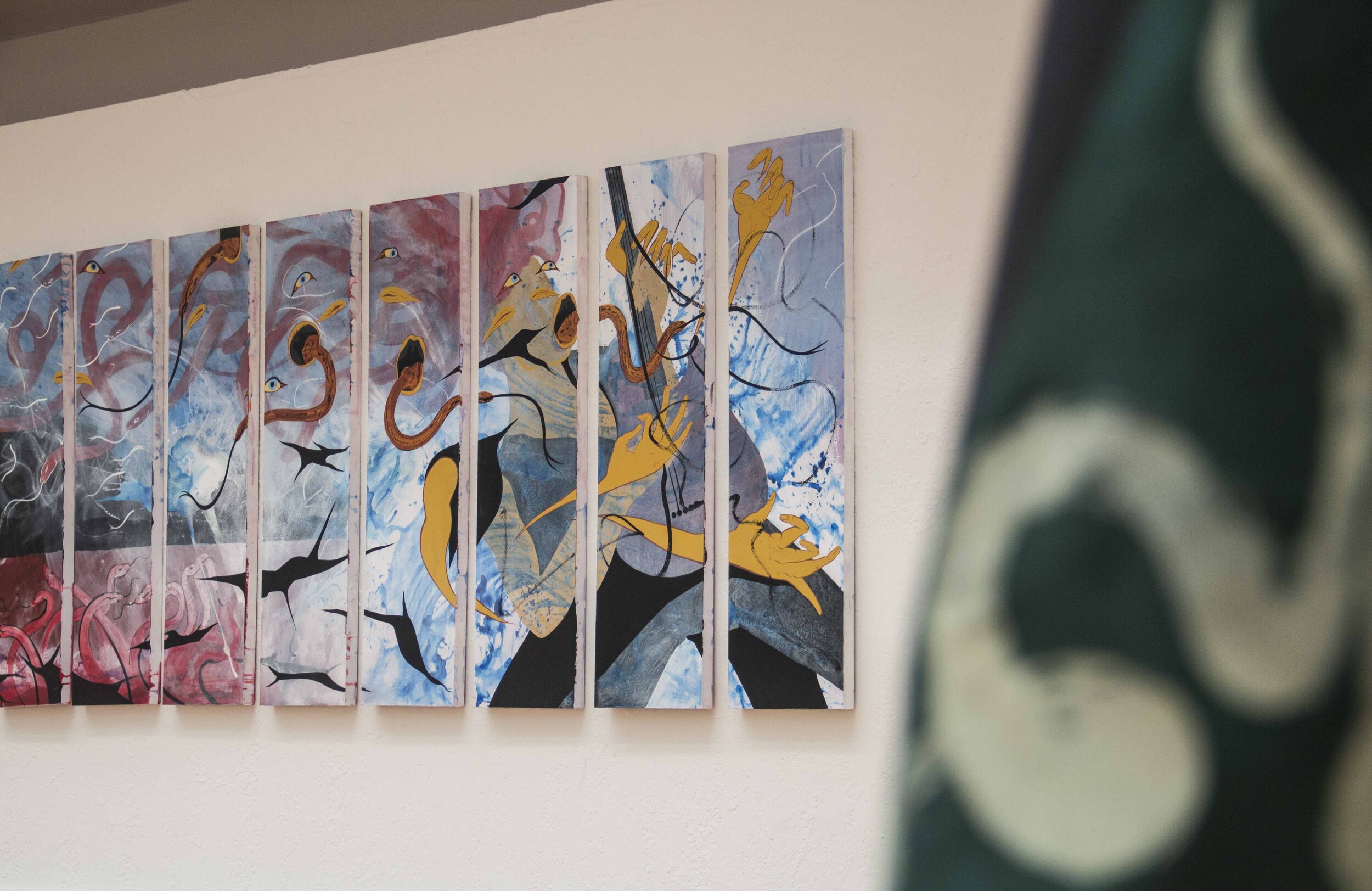
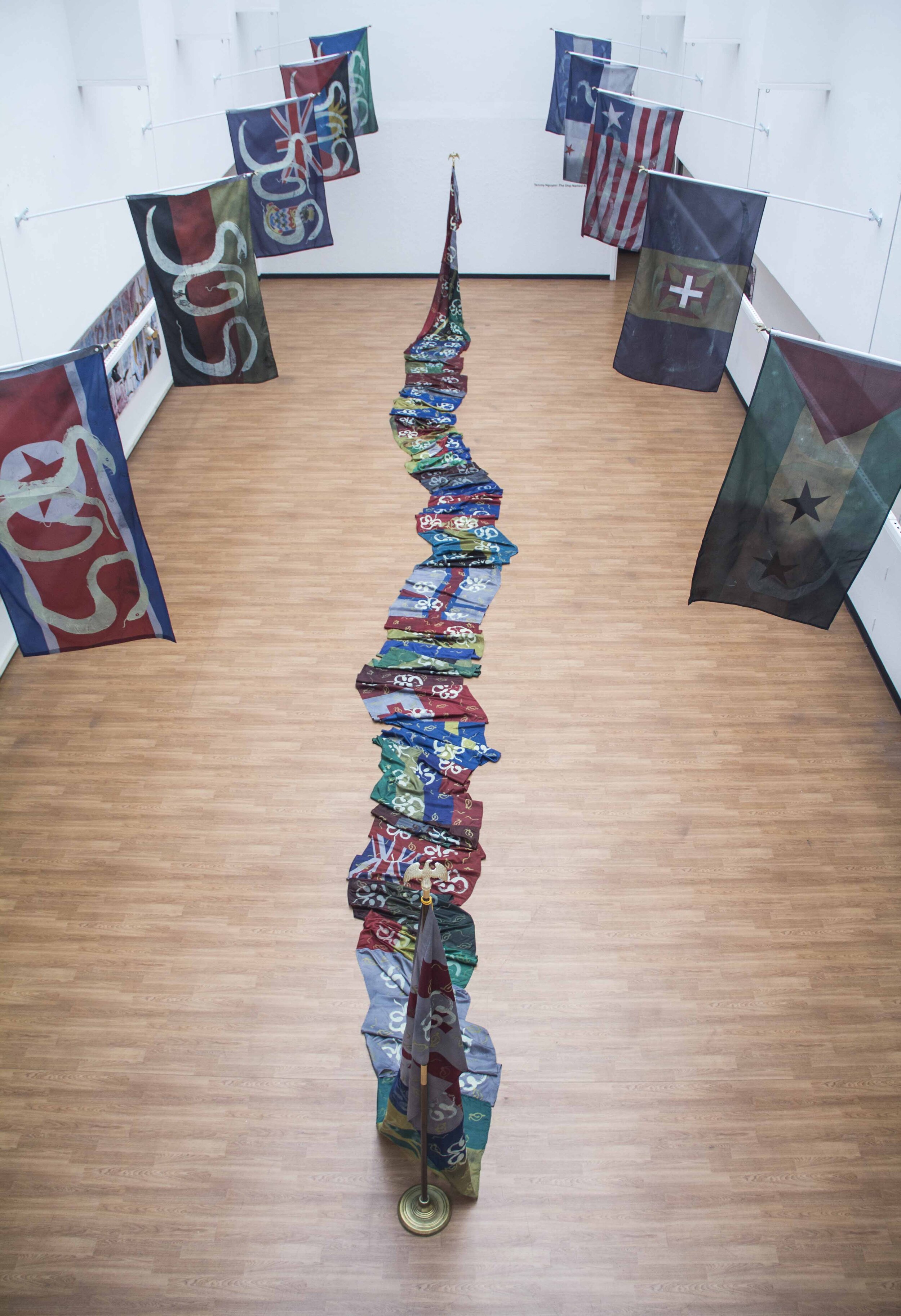
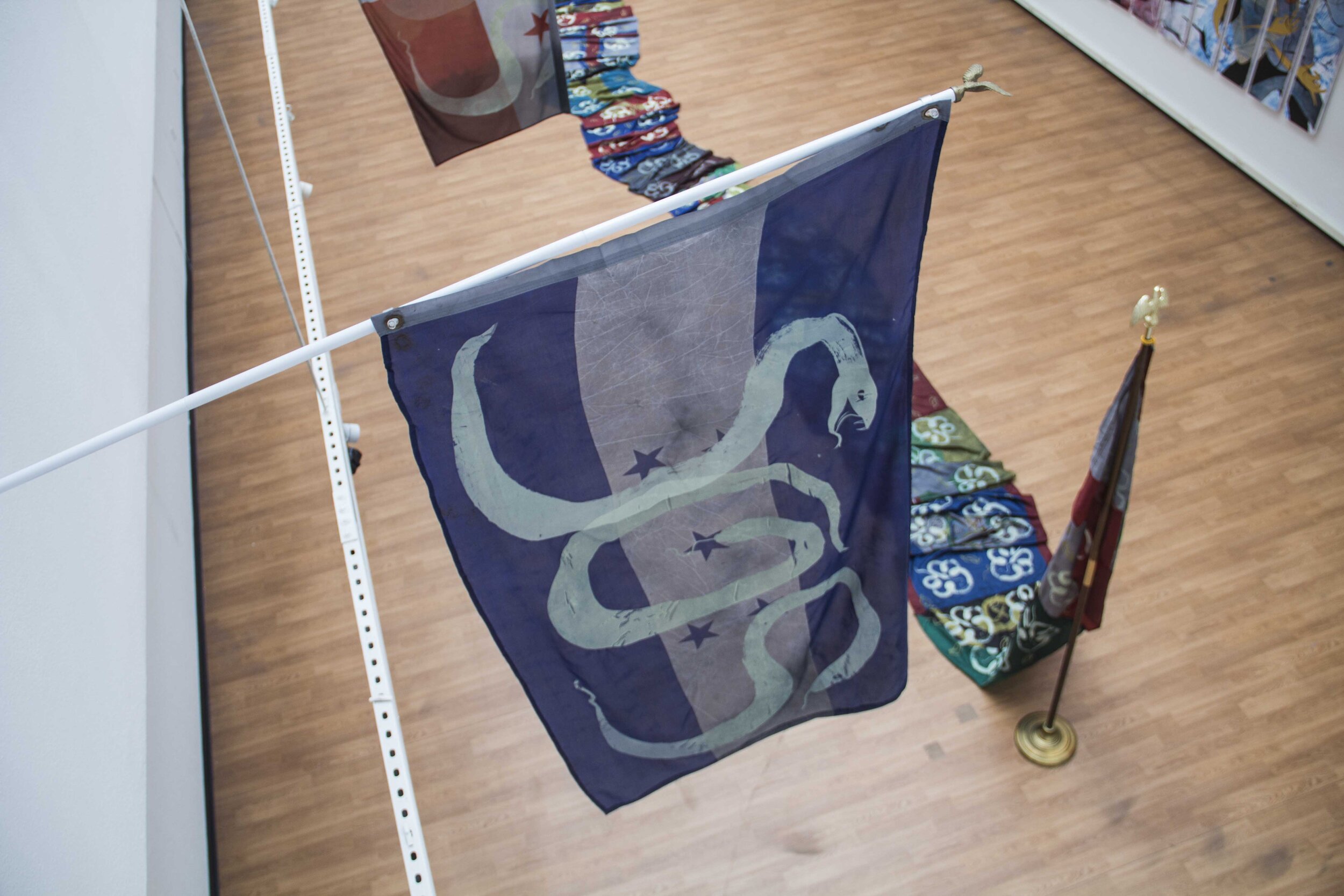


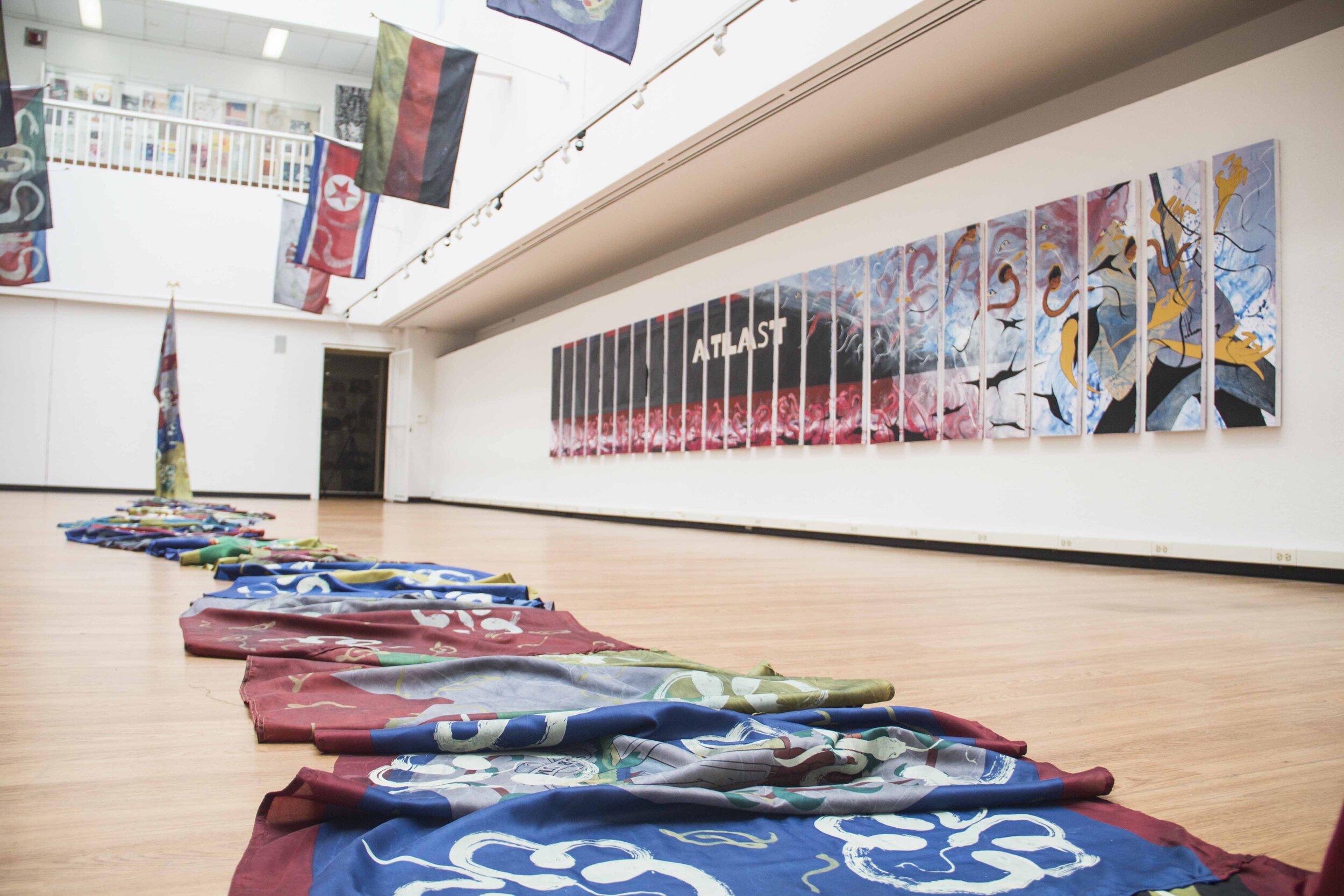
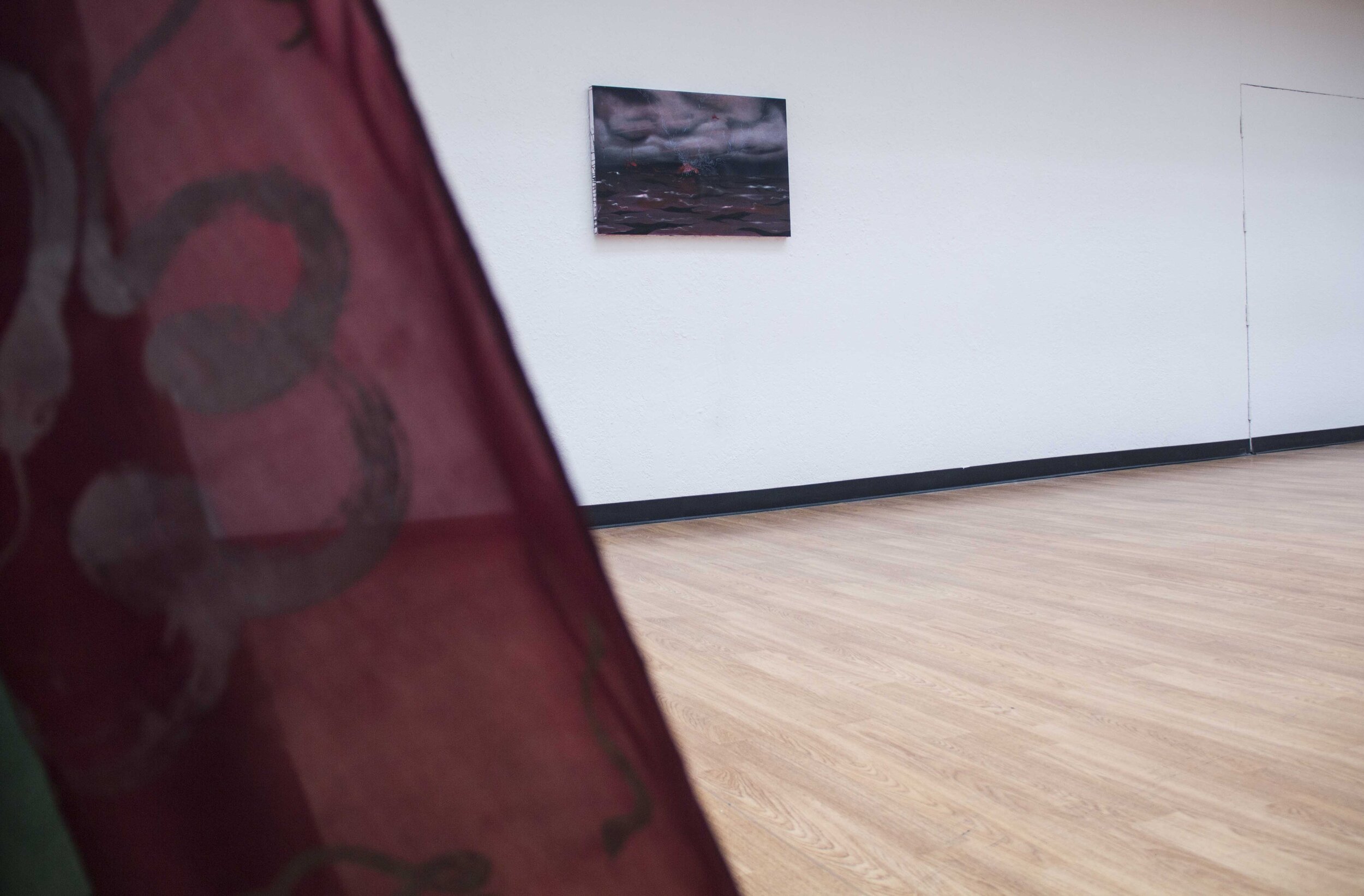
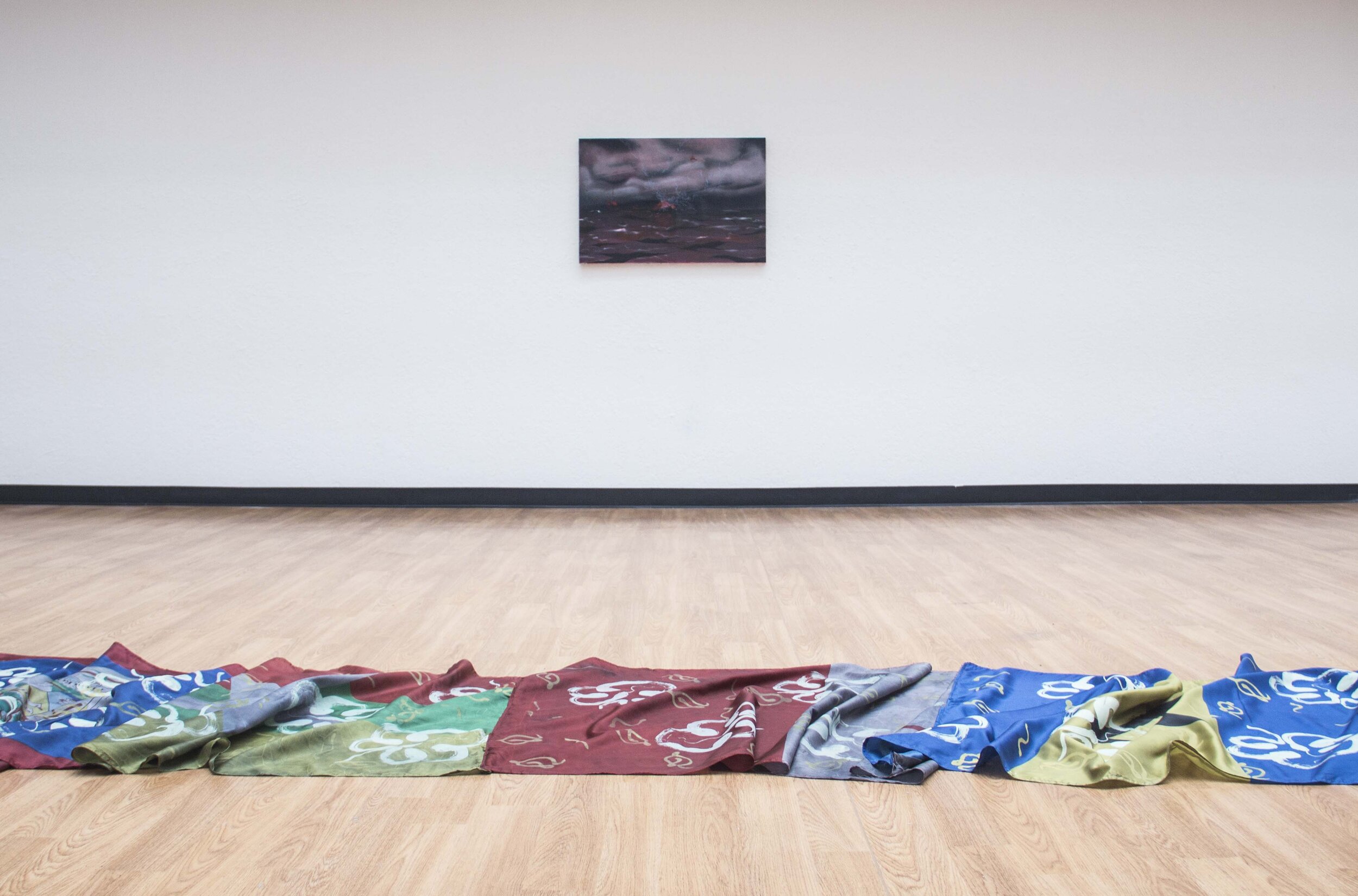
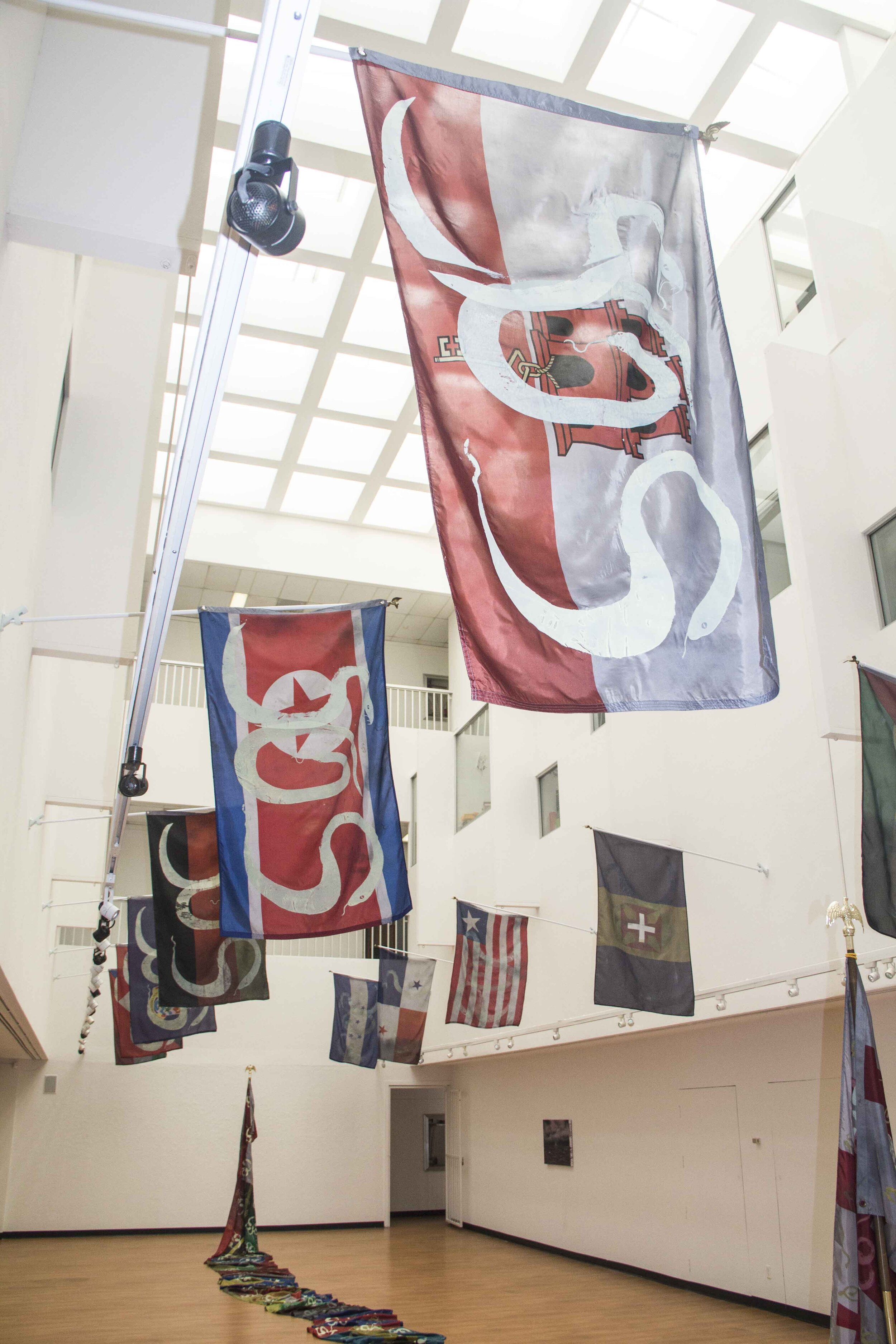
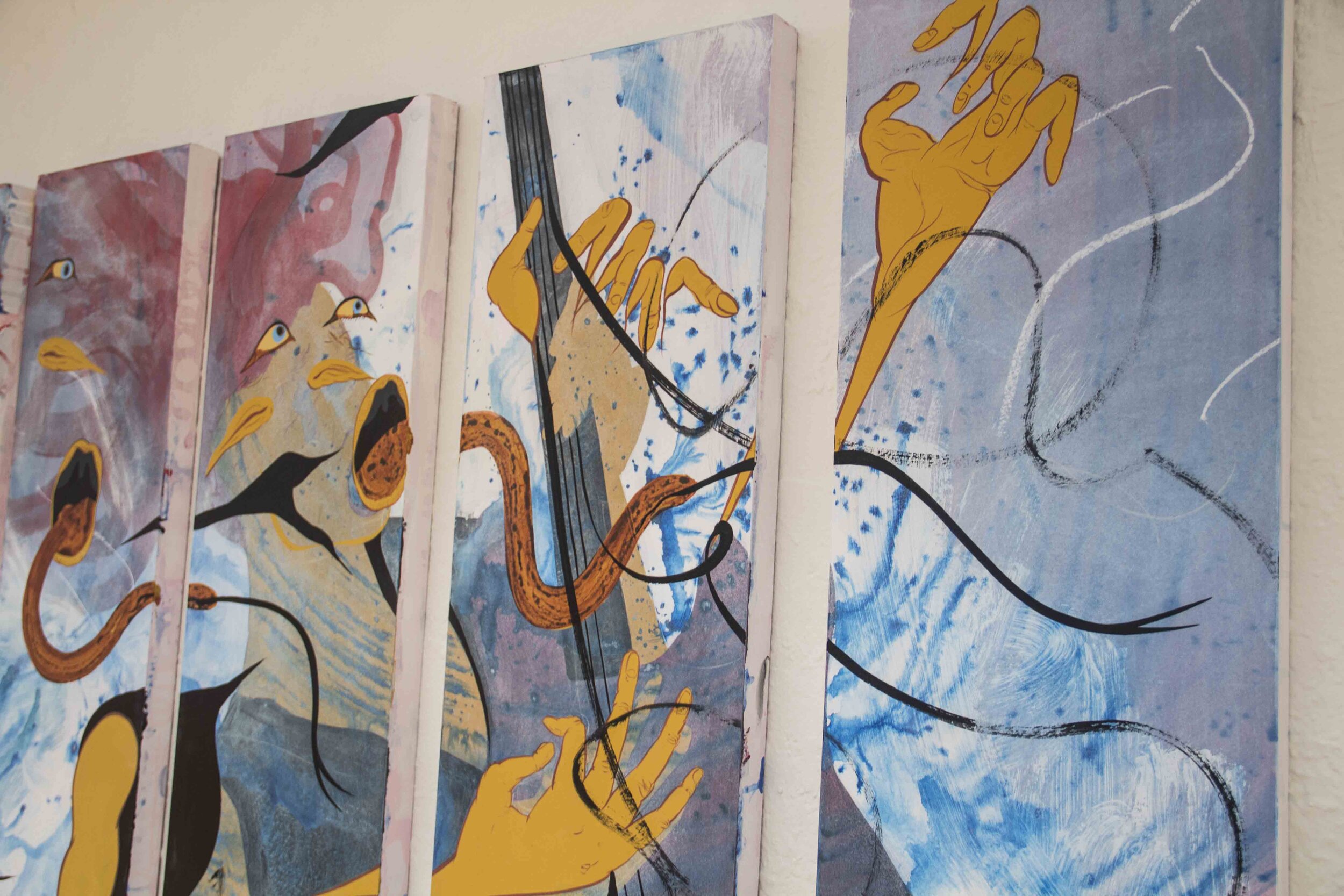
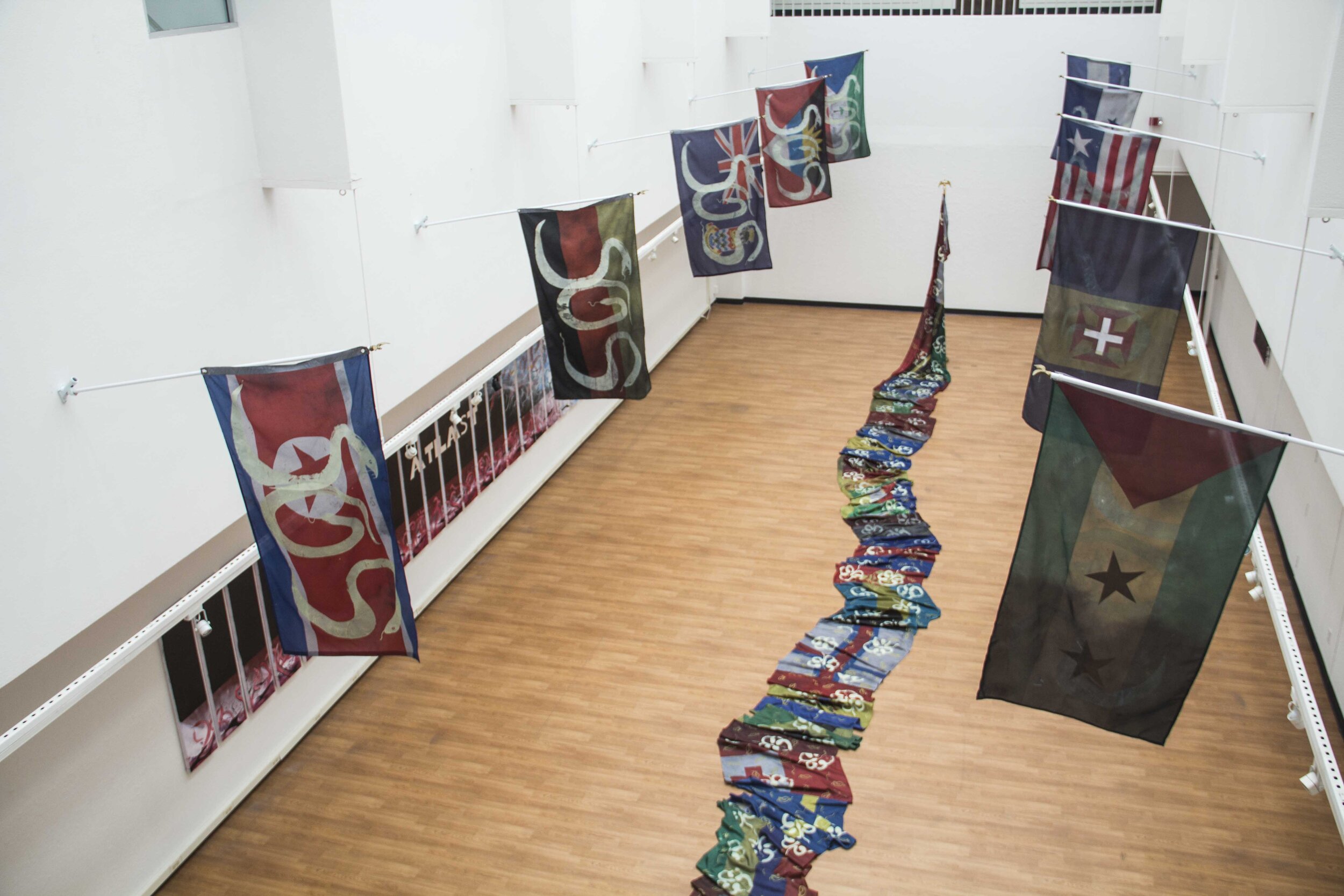
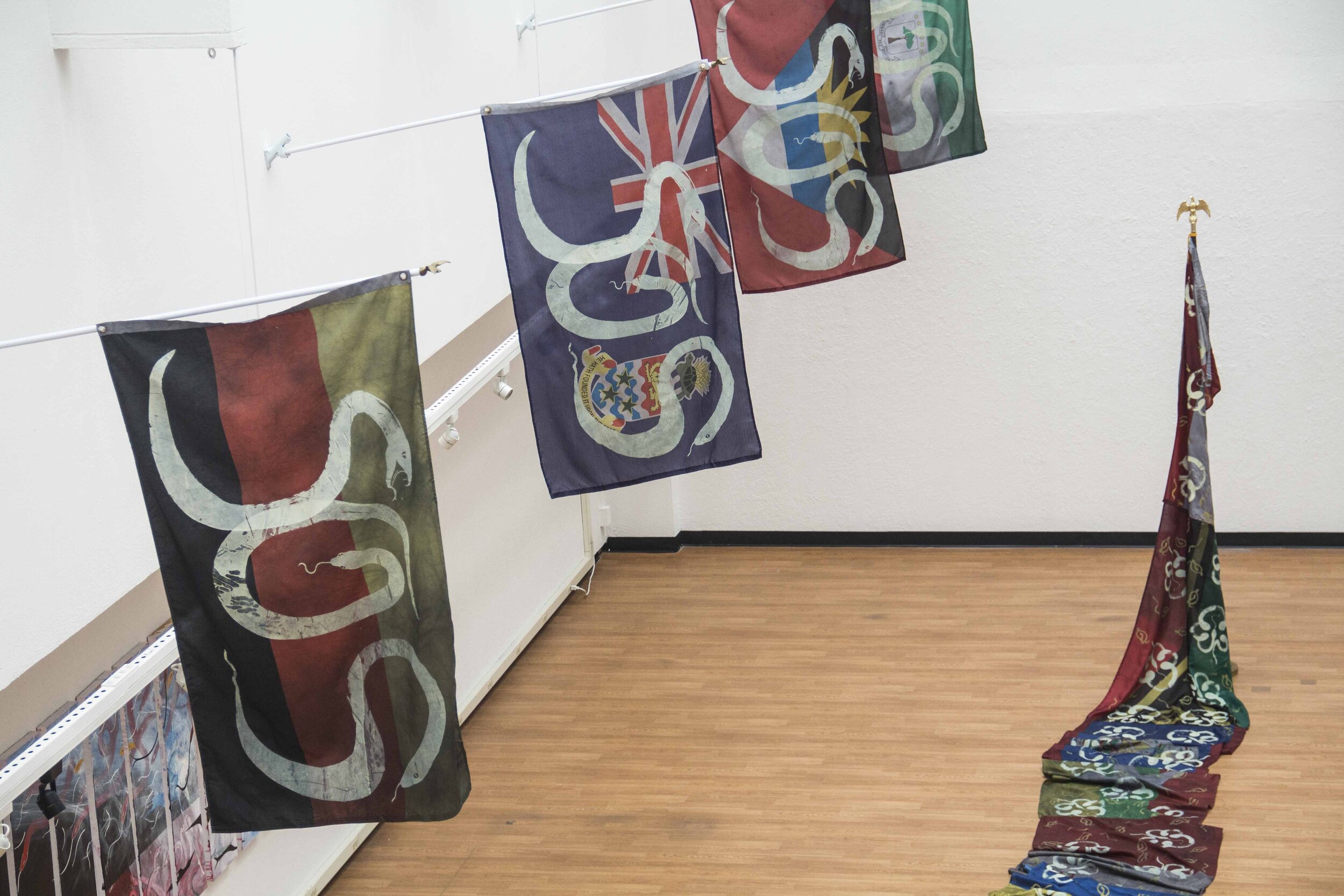
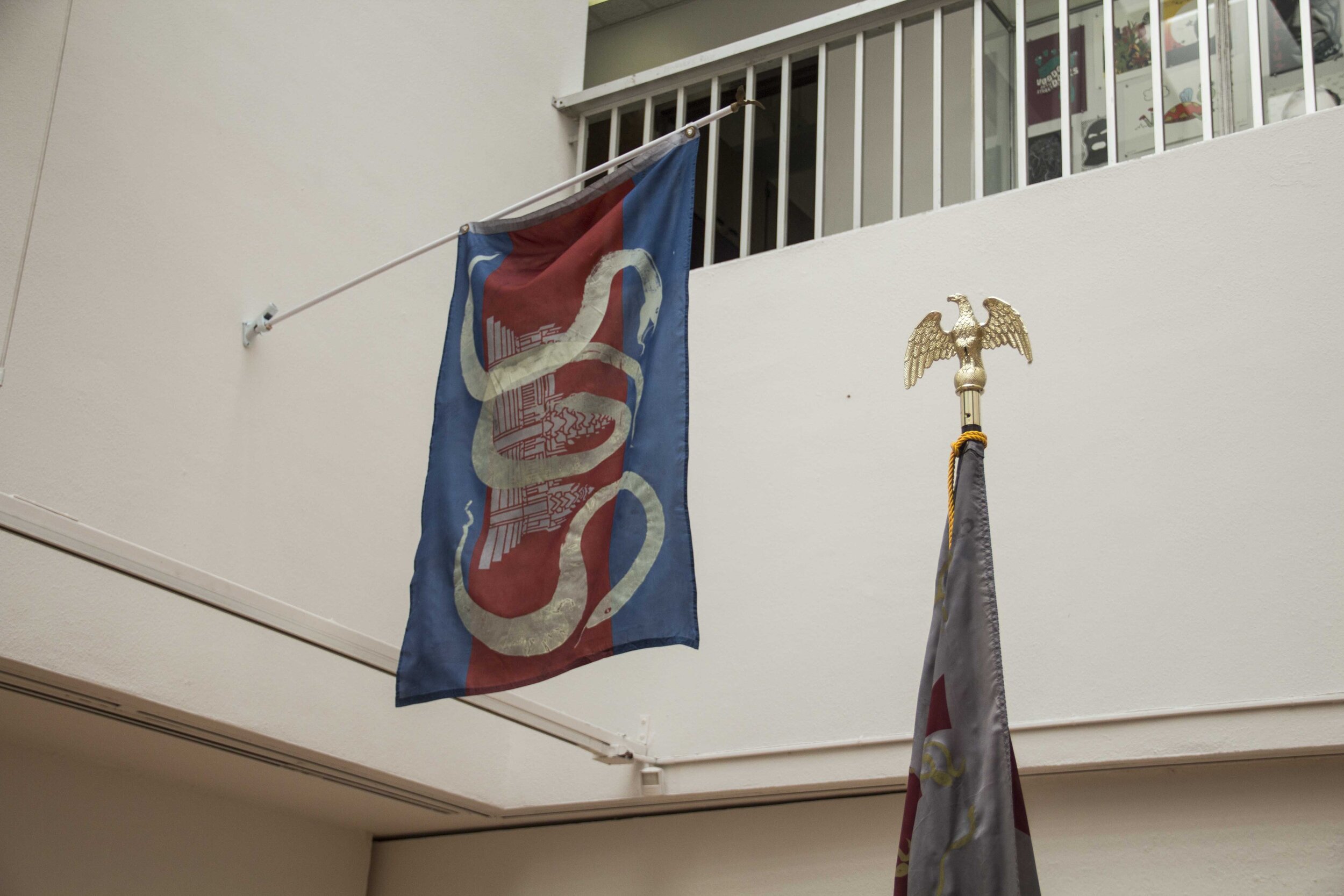
The Ship Named Atlast
My father told me that when he was a refugee escaping Vietnam, he wanted to commit suicide on the boat because it was so hot and he was going crazy. There wasn’t any fresh water, but luckily there was a freight ship that sprayed their tiny boat with such water, and this saved my father’s life.
When the Vietnamese refugees sought freedom in the sea, they ended up in the South China Sea, which is one of the largest trade conduits in the world. In these waters, the wealth of the West, the Middle East, Africa, and South Asia is connected to the prosperous shores of Southeast Asia and East Asia. This wealth is all of the oil that comes from the sea, the sand, and the palm trees that sway in the wind everyday not knowing their worth.
All of this wealth is carried by big ships and the one named Atlast is the one that sprayed my father that day he wanted to die.
A long time ago, in the time of myths, Perseus beheaded Medusa and when her blood dripped onto the seaweed, it all turned into red coral. So the blood of Medusa is what nurtures the sea, as the coral provided homes and food for the ocean’s species and a barrier that protected land from becoming water.
I imagine that Medusa is my mother, a refugee at sea, who plays the electric guitar to the tune of freedom as the ship named Atlast carrying the wealth of the world sprays her with fresh water. She rises with the snakes on her head; they are alive and ready to nourish the future.
At a dinner party in New York City, a woman told me about the Flags of Convenience when I told her that my parents had come to America by boat. These flags are a registry of national flags that a merchant from another nation can pay to use to put on his ship so that he can benefit from more lenient tariffs of that flag nation. This means that a man who is American can pay to be Panamanian while he is at sea, so that the steel he wishes to sell in China can benefit from being Panamanian until it is no longer profitable to be.
As of today, there are thirty-five flags in this registry. They are: Antigua, Bahamas, Barbados, Belize, Bermuda, Bolivia, Cambodia, Cayman Islands, Comoros, Curacao, Cyprus, Equatorial Guinea, Faroe Islands, France, Georgia, Germany, Gibraltar, Grenadines, Honduras, Jamaica, Lebanon, Liberia, Madeira, Malta, Marshall Islands, Mauritius, Moldova, Mongolia, Myanmar, North Korea, Panama, Sao Tome and Principe, Sri Lanka, Tonga, and Vanuatu.
When my parents fled Vietnam, they left with a different flag that is still Vietnamese. It is a yellow flag with three red stripes in the middle that represents the three different regions of their mother country. They wouldn’t fly this flag again until they reached America, a country with a different flag that would let them fly this flag.
While at sea, my parents flew another flag. It was made out of bed linens that they brought to the water. They wrote SOS on these flags, and when this flag flew away, they flew another flag that waved the flowers printed on the bed linens they slept in back at the place where they were represented by the three-striped flag.
In these waters, flags only have temporary meaning. The little refugee boat and the large ships have flags that are just helping them get to the next prosperous shore. So, in the moment when my father wanted to die, there was no flag that saved the other; it was just fresh water and a man from another boat that saw himself in the other.
I think that the sea should sound a lot like freedom, but I don’t think it does. When I lived in Vietnam, almost every bar that I went to with live music went wild when the band covered Nirvana’s Smells like Teen Spirit. The crowd would shrill at the top of their lungs, “Hello, hello, how low!” They would thrust their beers in the air and deeply inhale their cigarettes and join the music in ecstasy. Many of the women whipped their heads back and forth; their hair was wet from sweat and whisked around the air like the snakes of Medusa. I think this is the sound of freedom and it should be the sound of the sea.
But if it is not the sound of the sea, it came from the sea and rolled onto the shores of Vietnam, into the ears of its youth, and out of their fingers that struck the guitars, vibrating into the souls of the post-war people who were longing to hear the sound of freedom.
I think that the Vietnamese people had an inkling that a sound like this was the sound of freedom when they met American soldiers during the Vietnam War. During times of leisure, there were soldiers who played songs like Let it Be and Come Together, and I think some of the children who waxed their surfboards and lit their cigarettes knew that there was something in songs like these that could free them.
The sounds of freedom didn’t get to Vietnam until a decade after the war. The doors opened to such a sound in 1986 when the Communist Government opened their doors to the global market making goods from overseas— and even banned music— easier to come to shore. Smells Like Teen Spirit came into the world in 1991, and I think that it rose to popularity when the youth of Vietnam were picking up the pieces of war in the 2000s and started to play this sound of freedom.
I can’t remember the sound of freedom when I zoom out and look at the entire South China Sea. I can’t remember freedom when I zoom out at look at the planet’s oceans, because all of the coral that was once red is now nearly all white, in part because of all of the humans’ need to carry all of that wealth on all of those ships.
When Perseus was flying past the Titan Atlas he held Medusa’s head to him and made him look at her, thereby turning him into stone. And there, Atlas who had been condemned to hold the world continued to do so, but as stone.
“At last! At last!” said everyone and everything once it got to the more prosperous shore. “At last! At last!” said every refugee and sailor and barrel of oil.
Atlast is the name of this ship, and it is Atlas who carries the world, but the world is all of the wealth, all of the oil that needed to travel through the waters where the refugees traveled as well.
And so, it is in the same waters that Atlas passes Medusa, each dead and alive in their own ways, each helping the other find freedom.

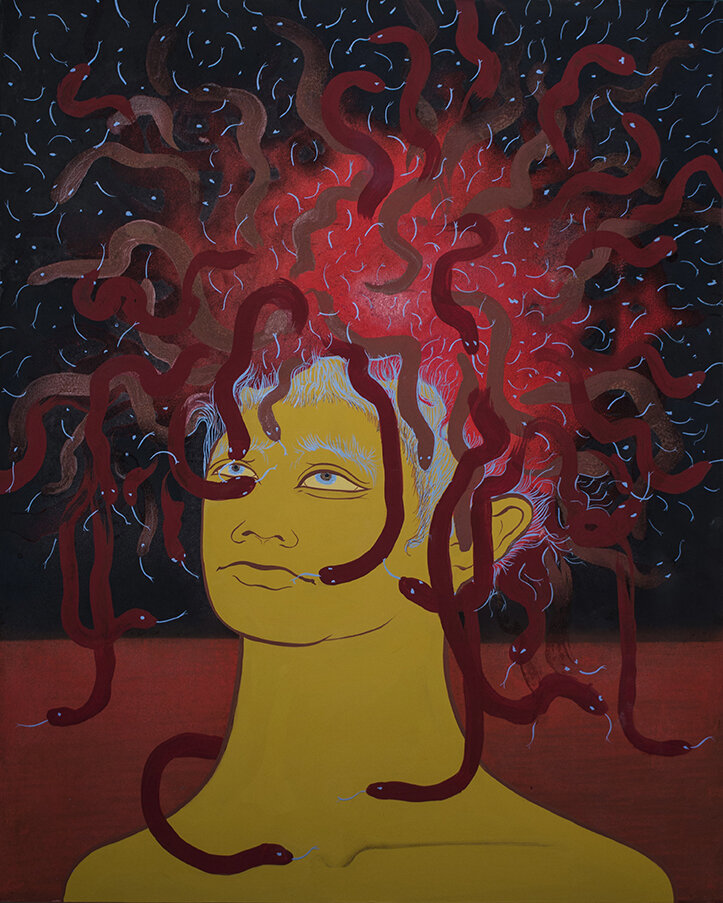

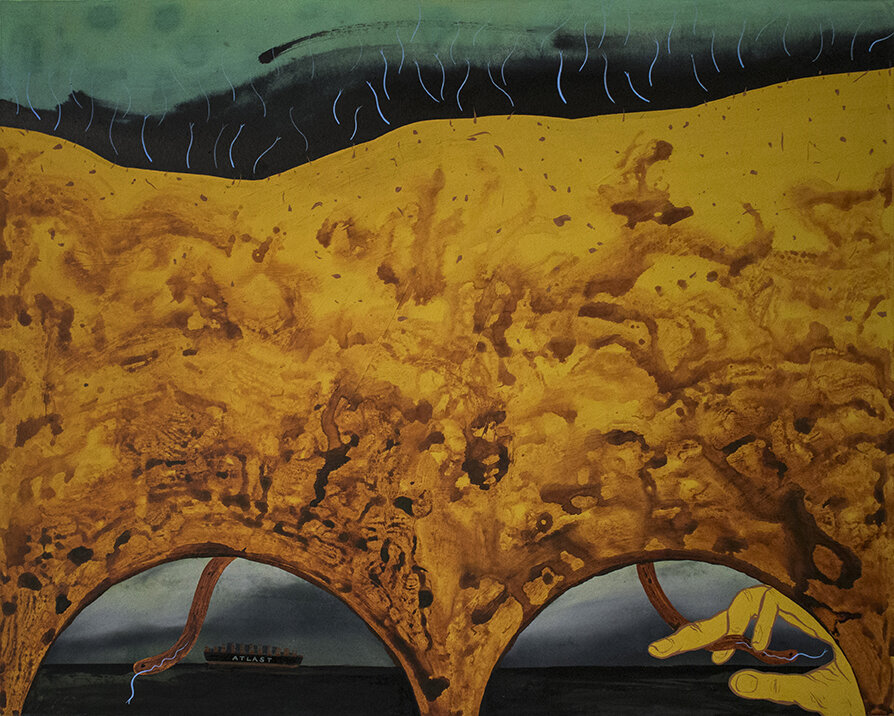
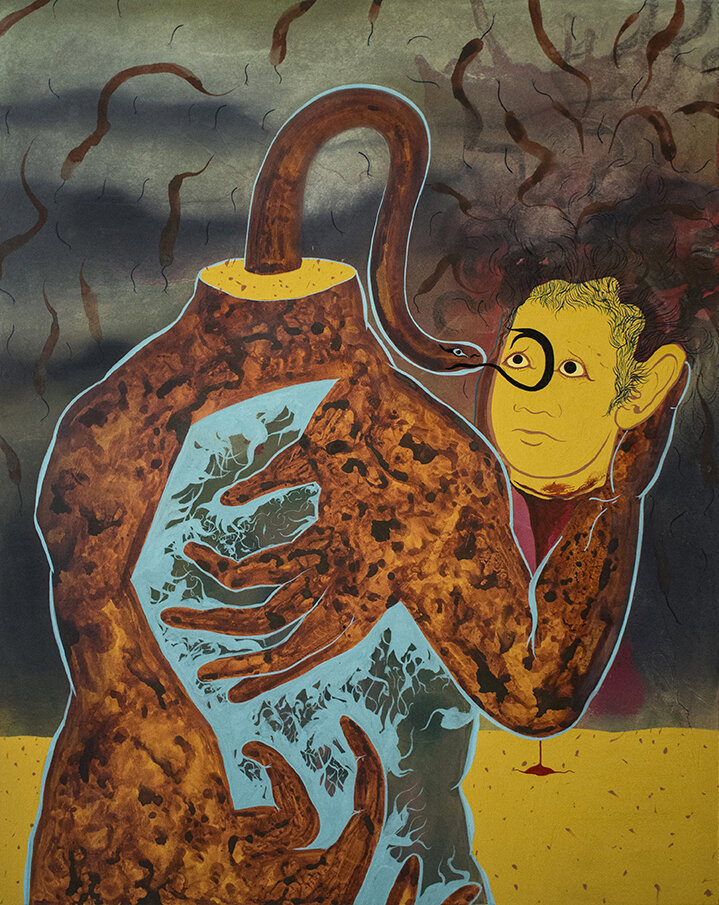
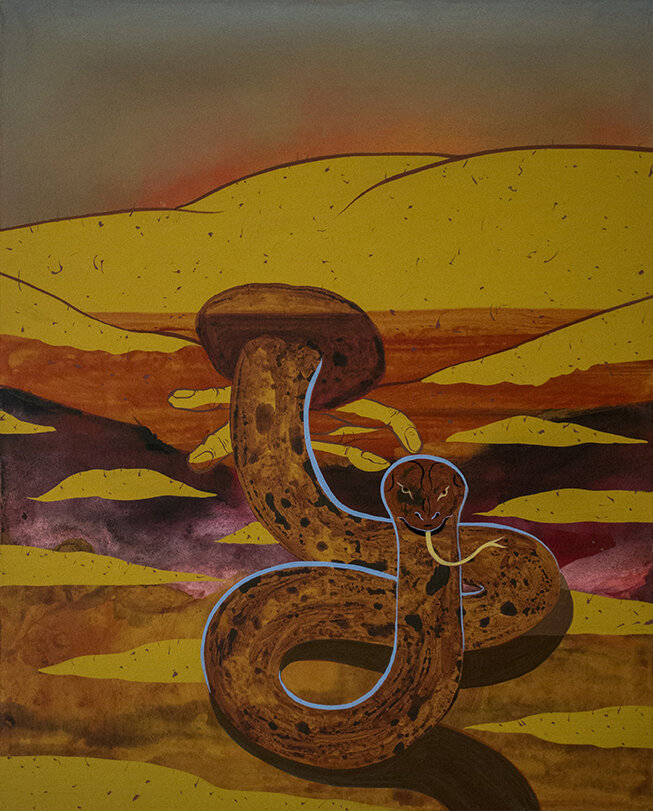
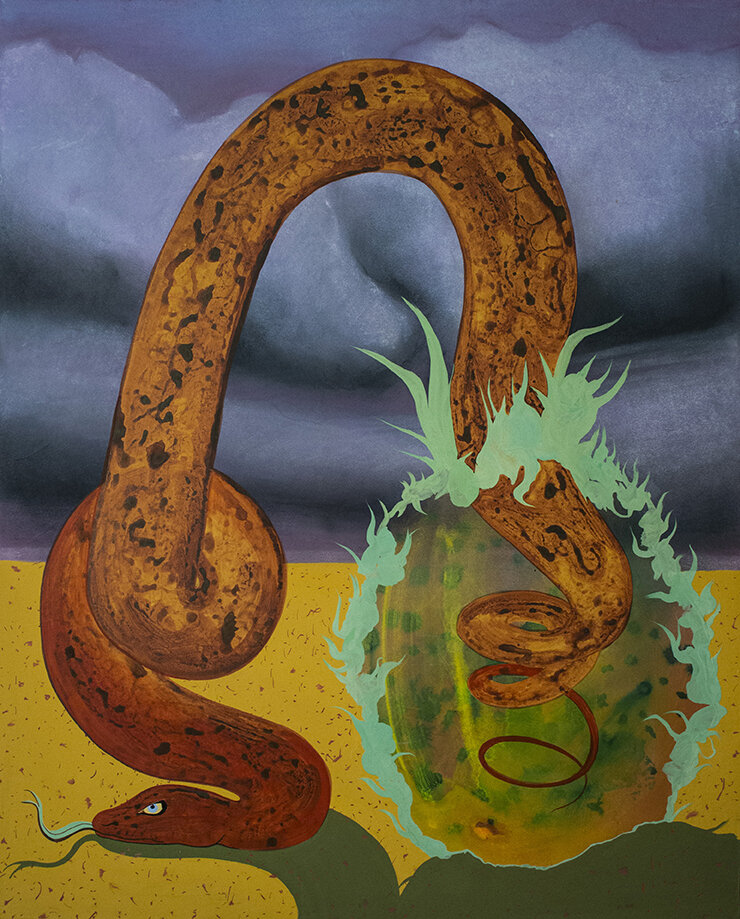
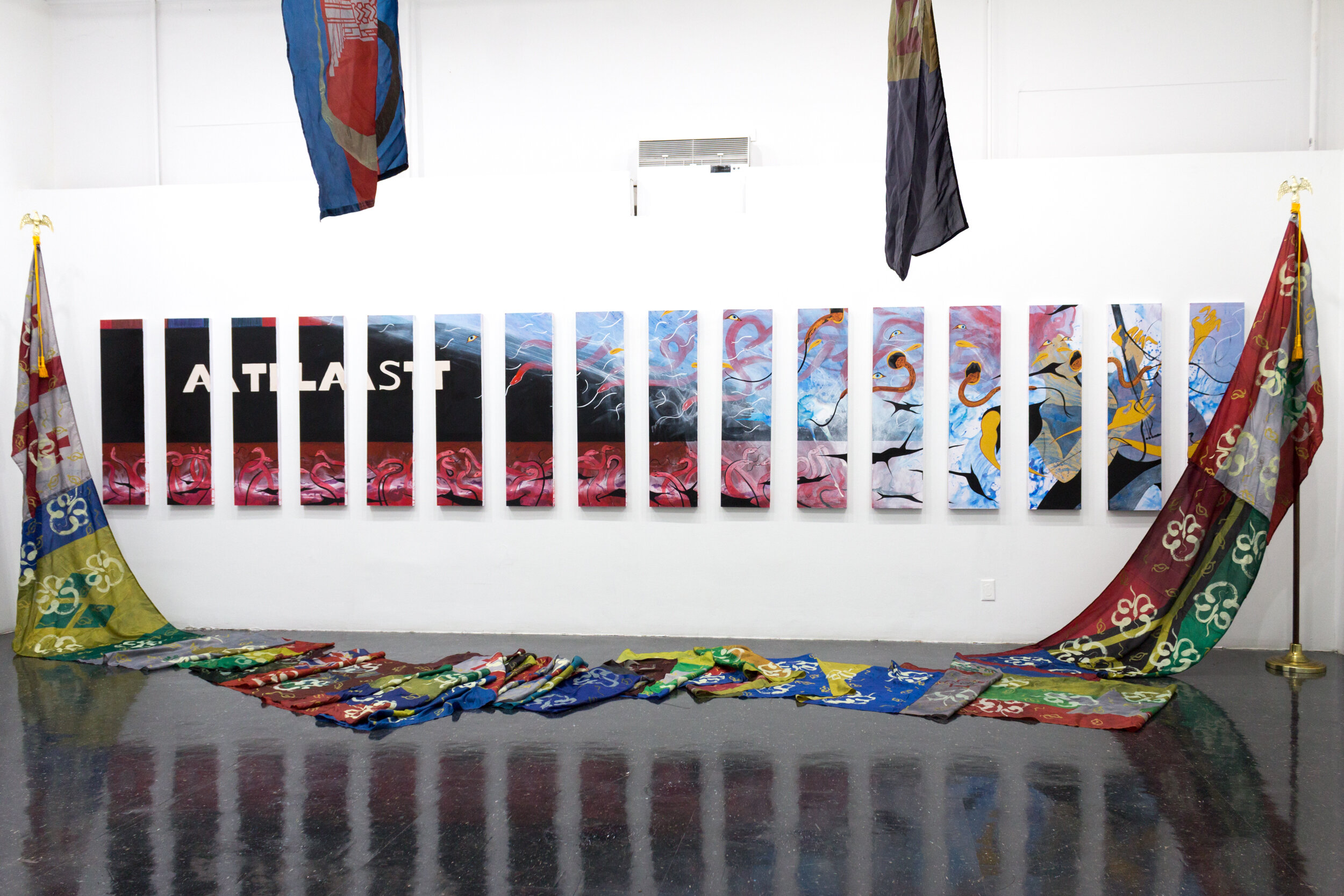
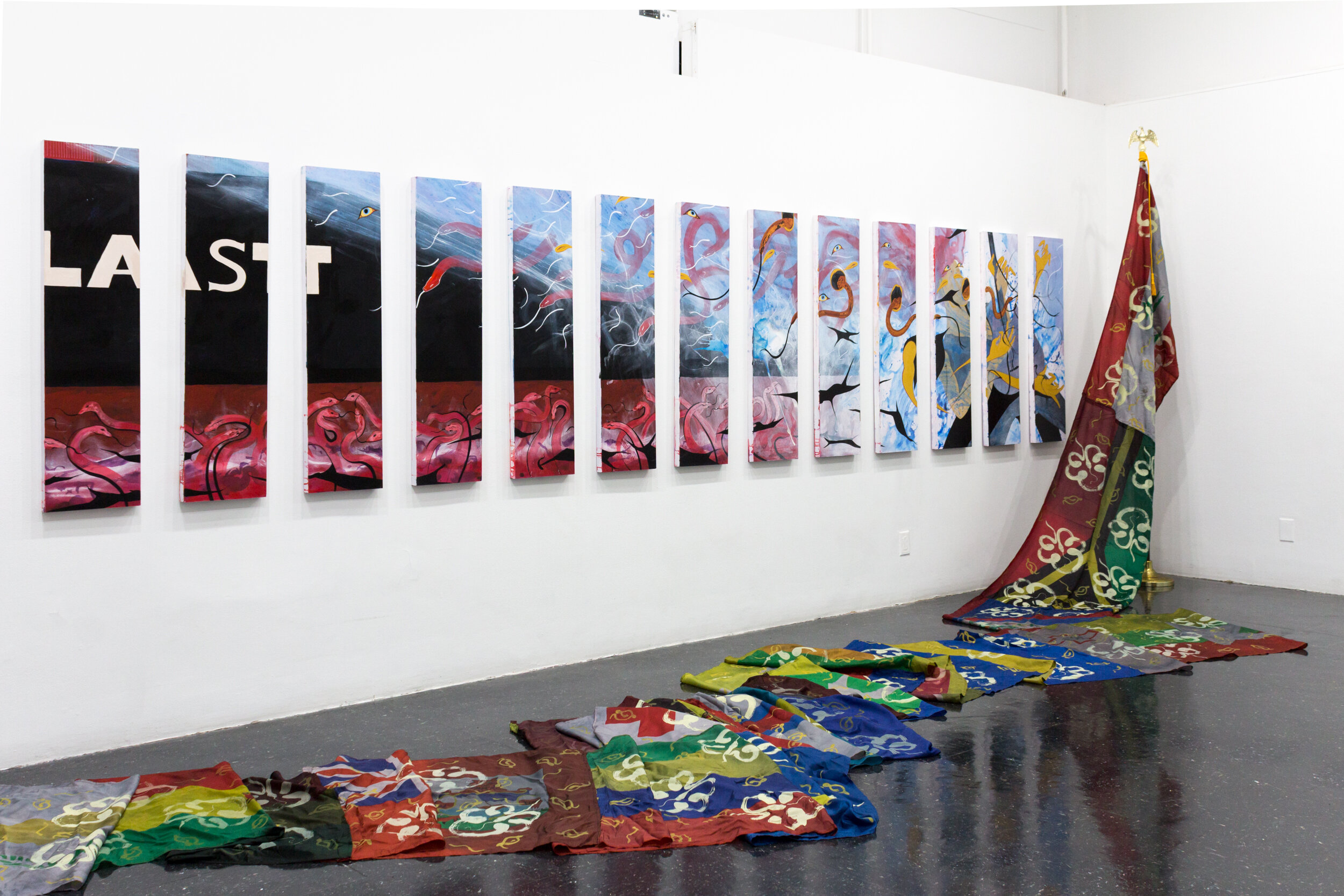
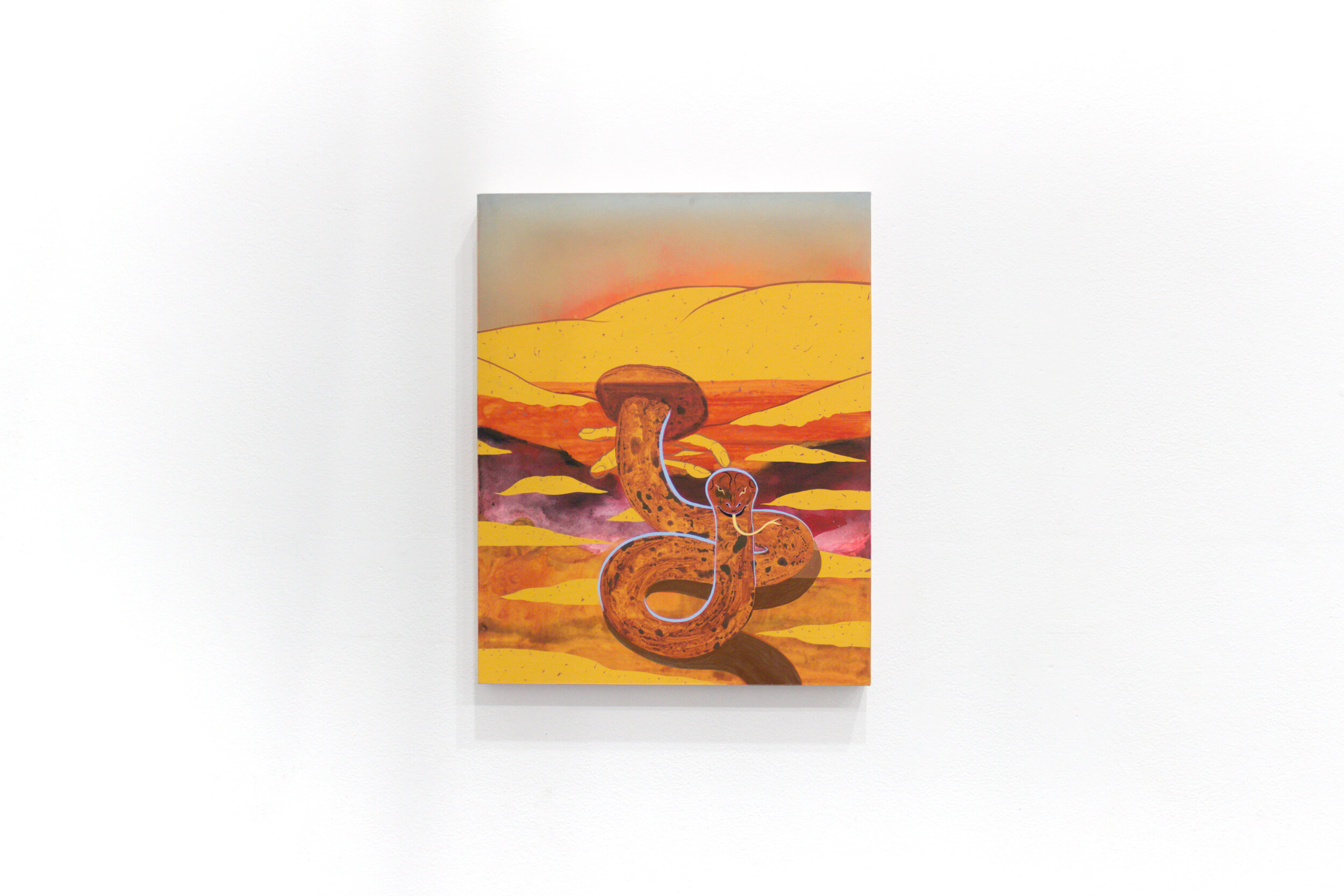
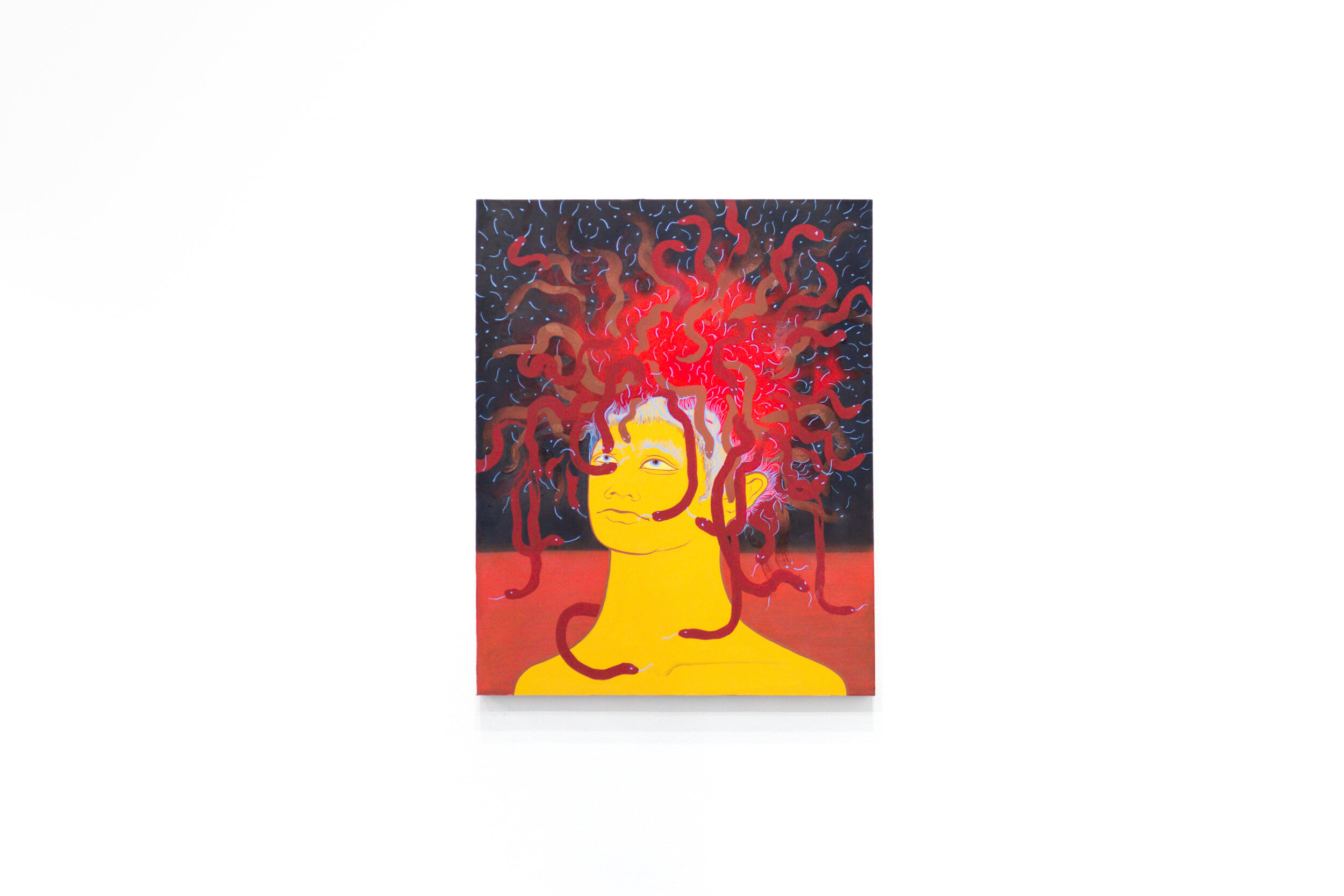
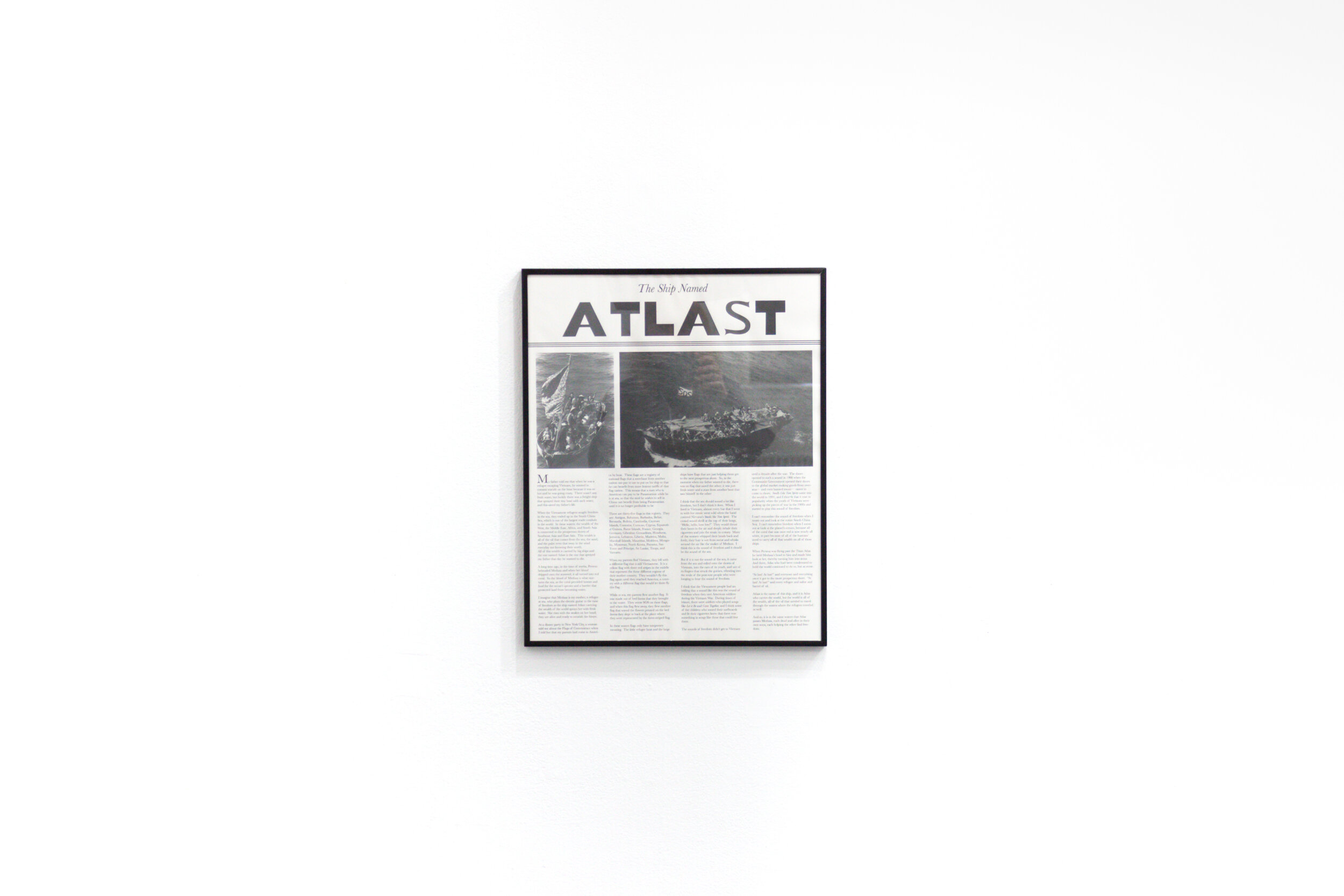
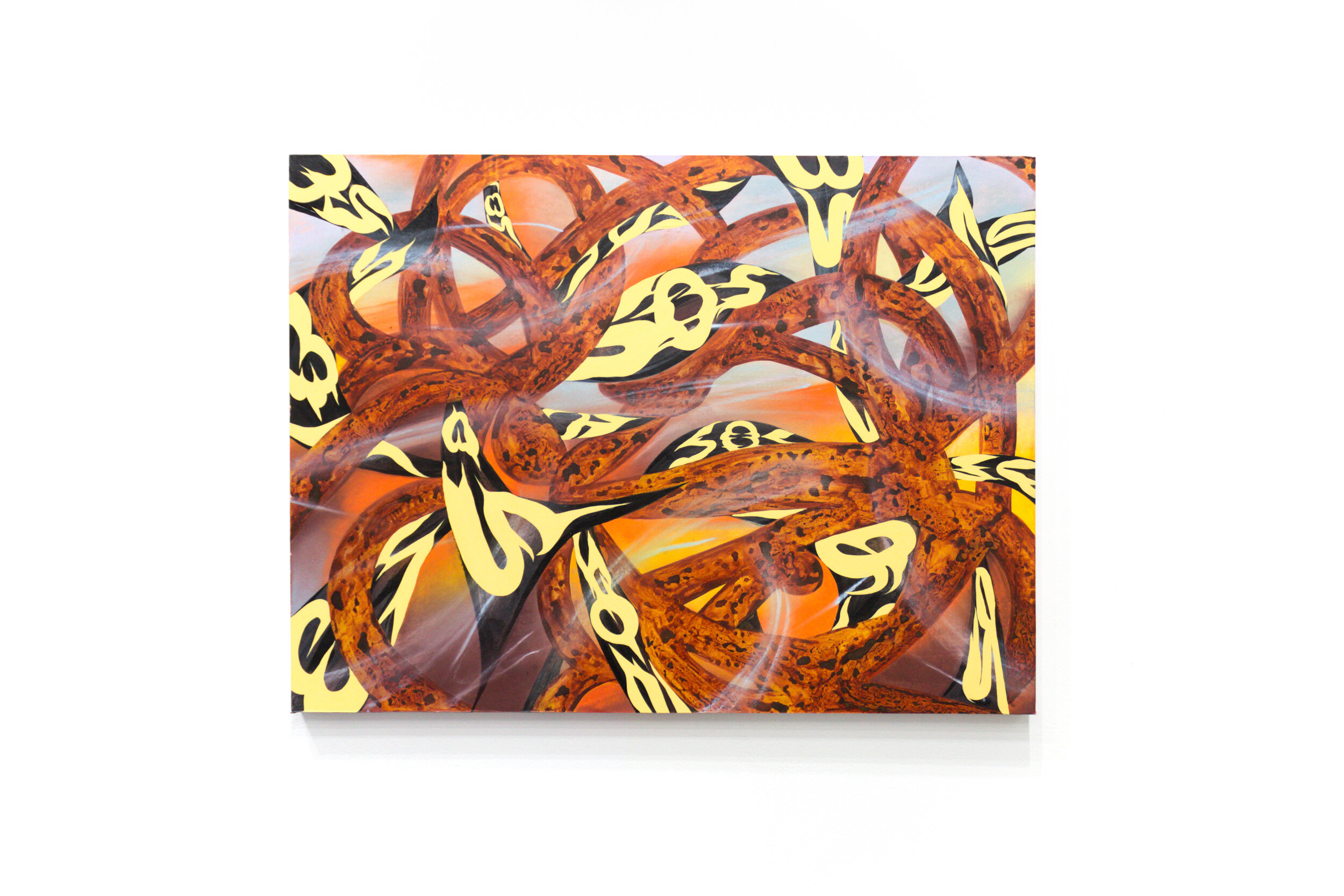
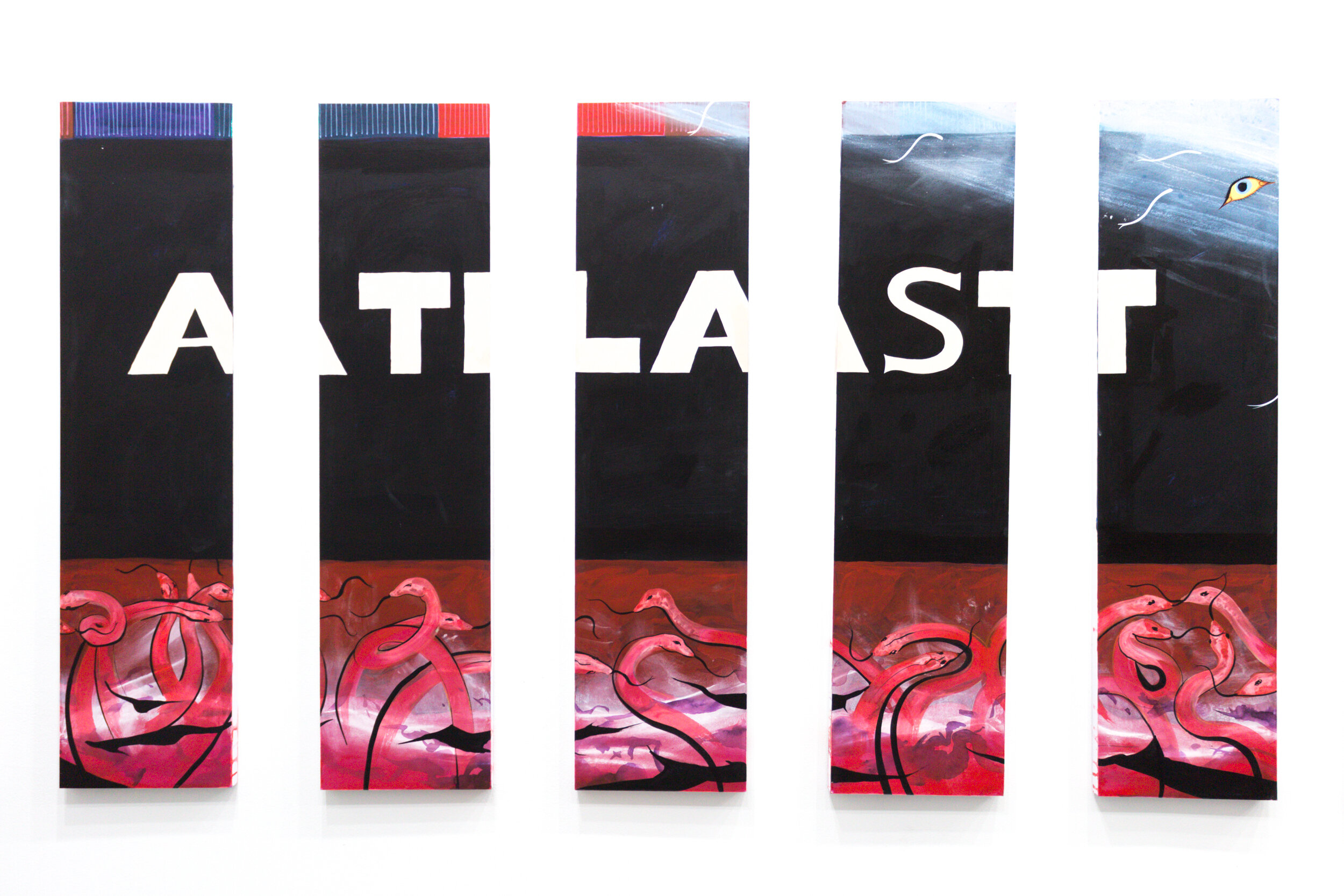

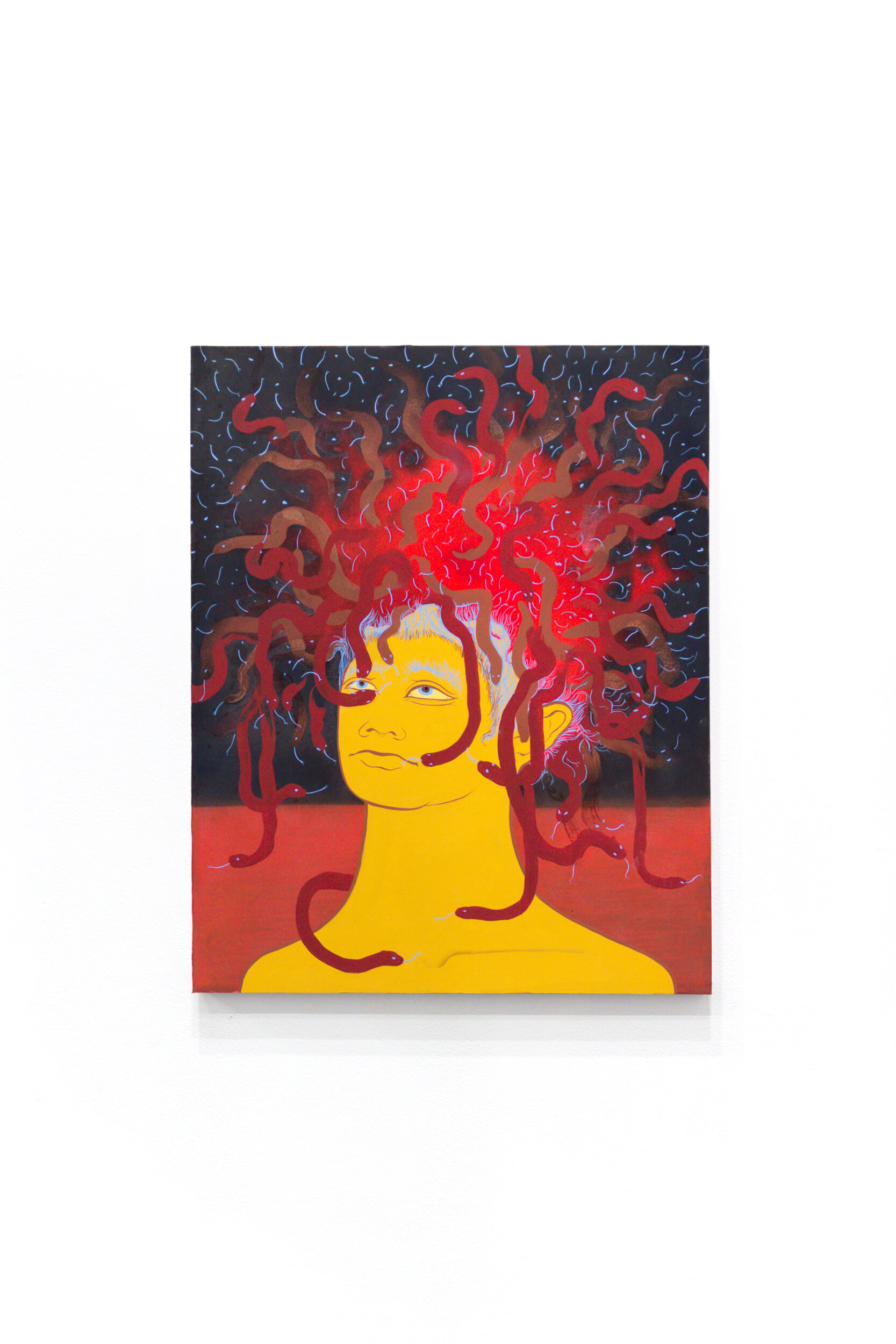
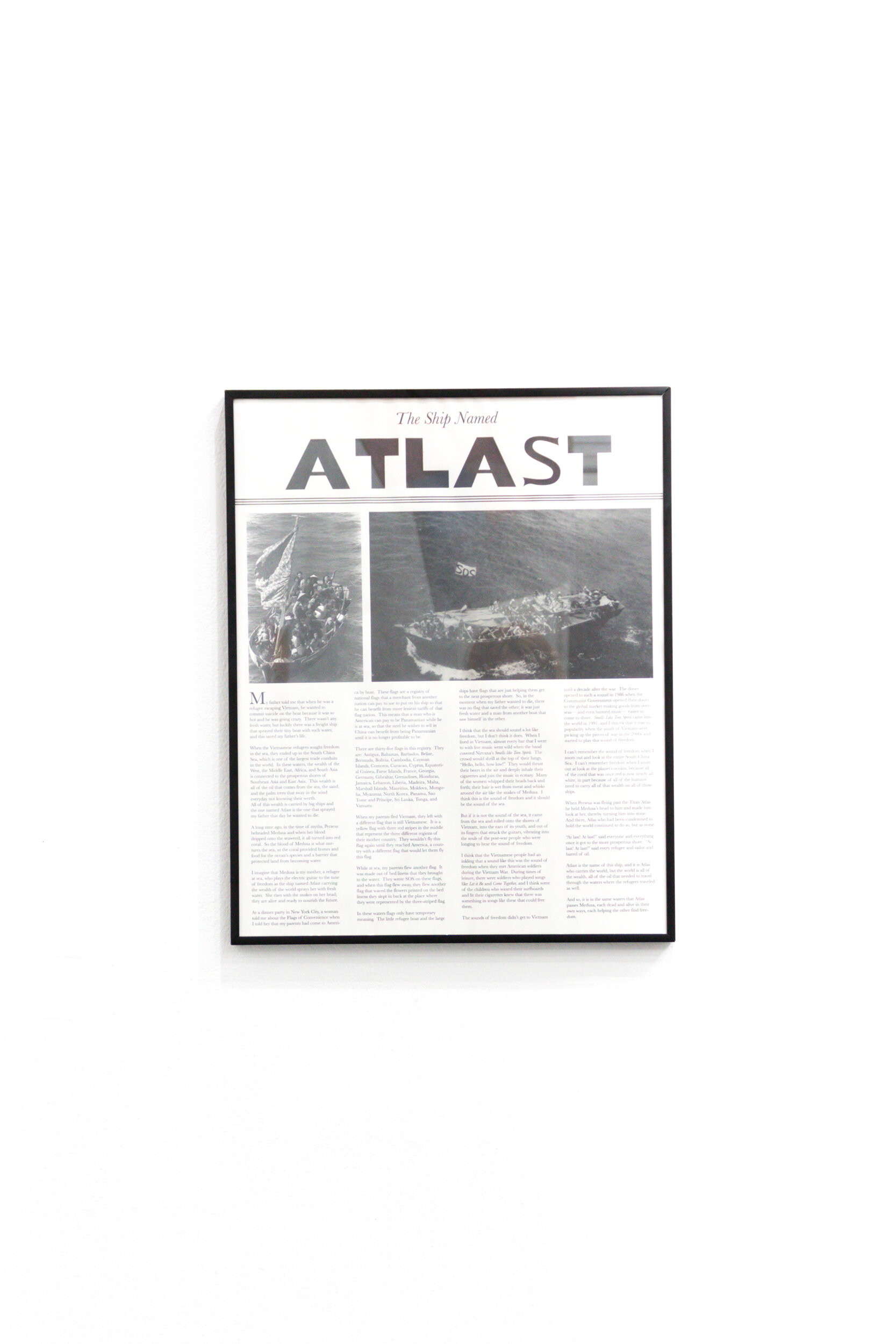


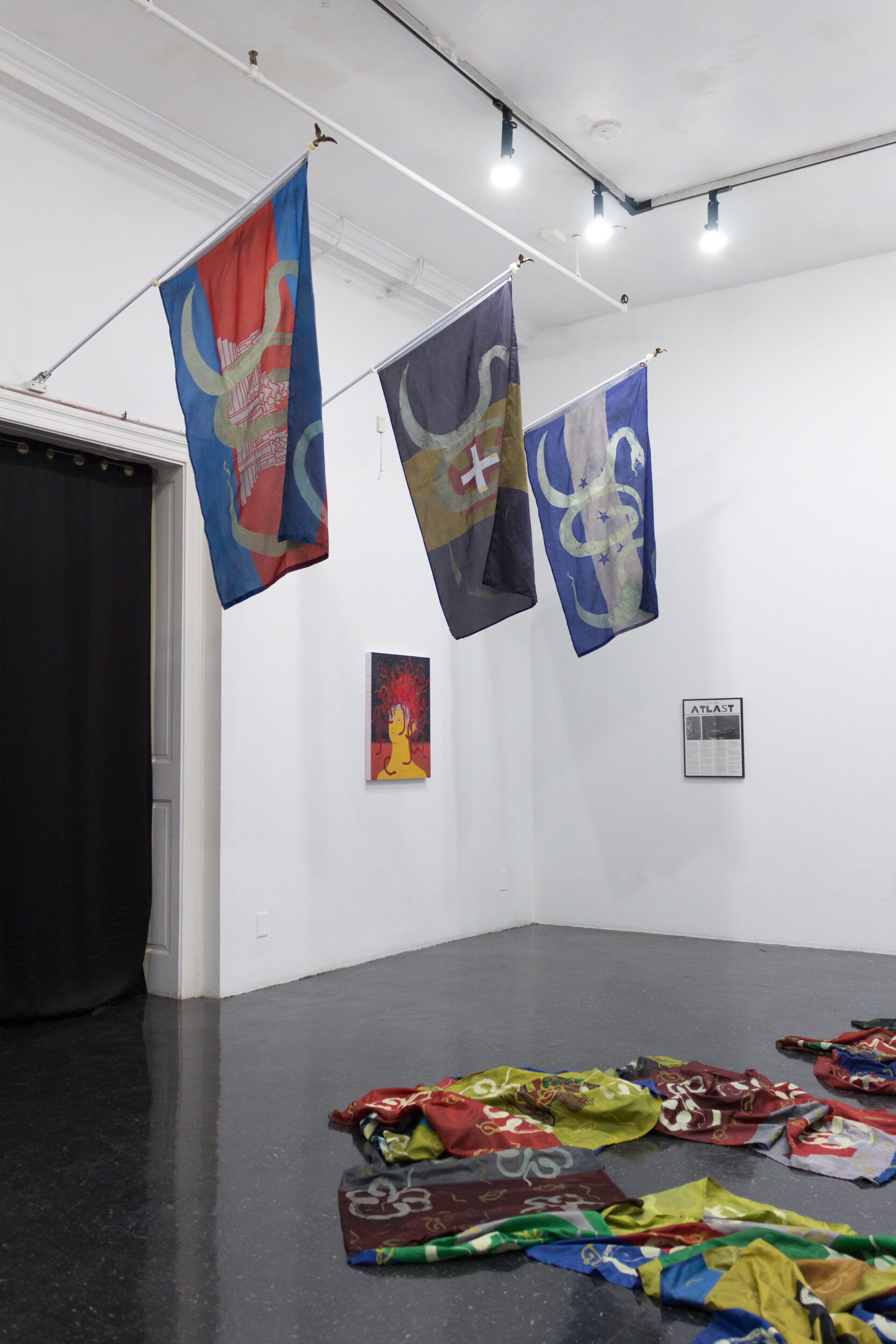
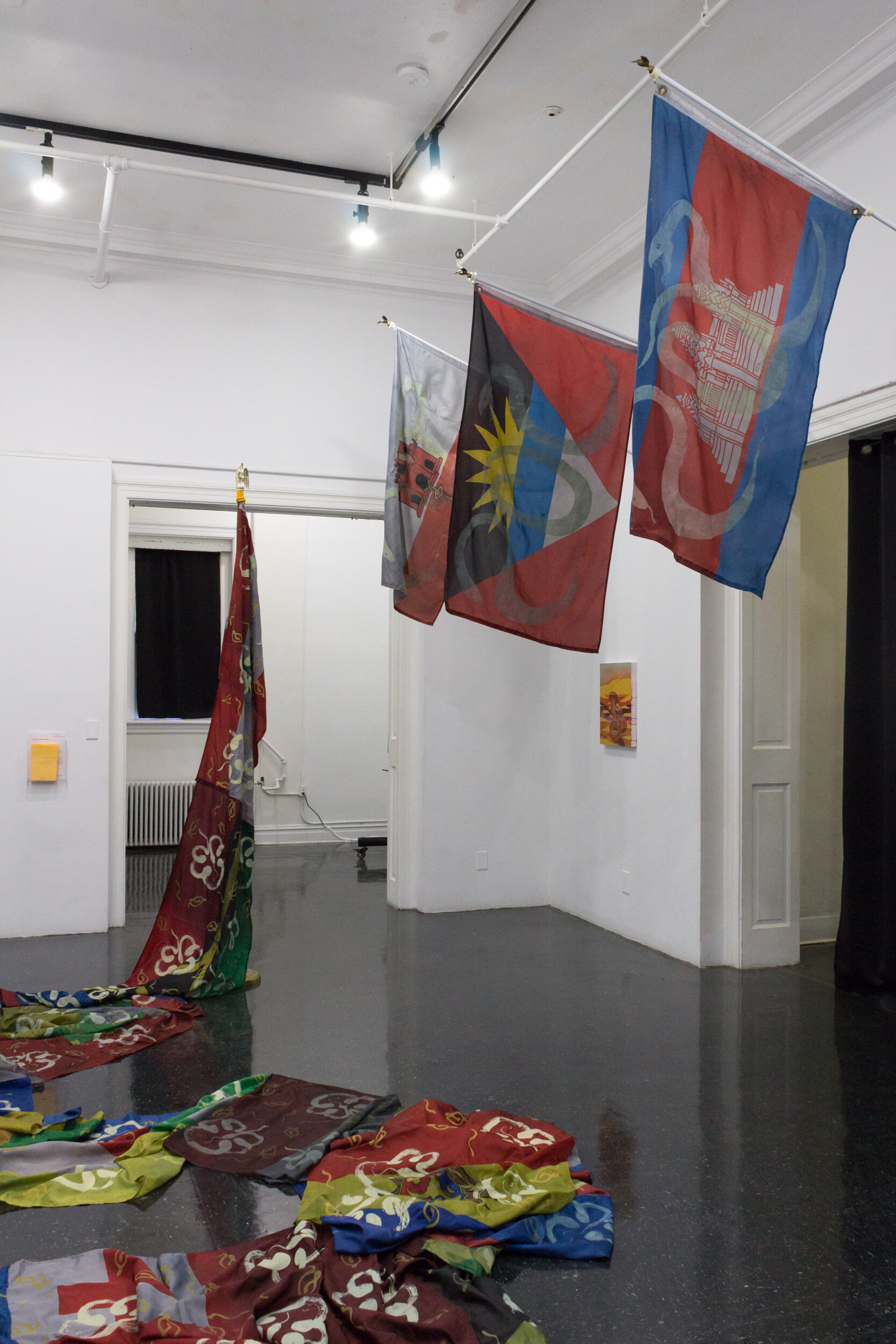
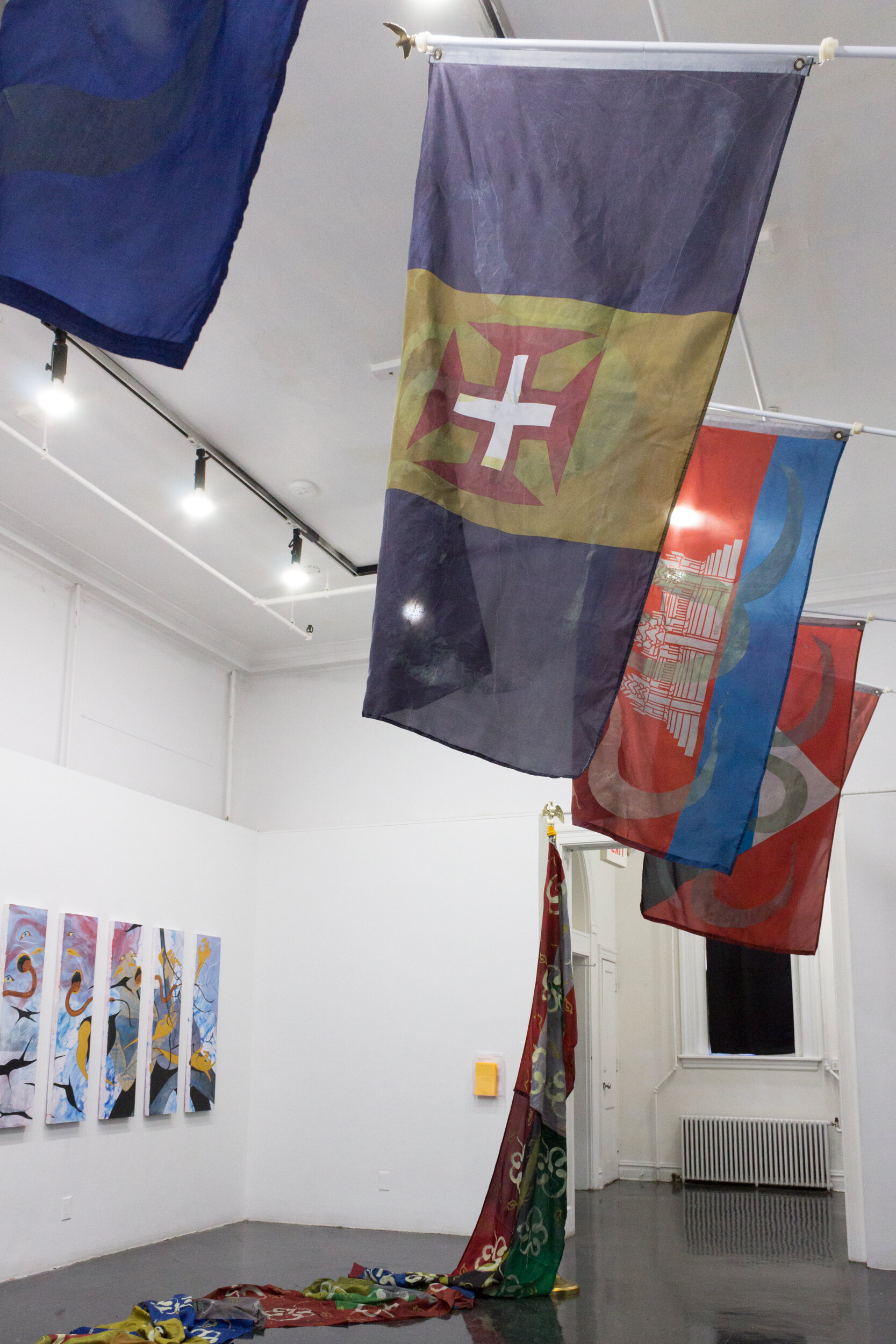

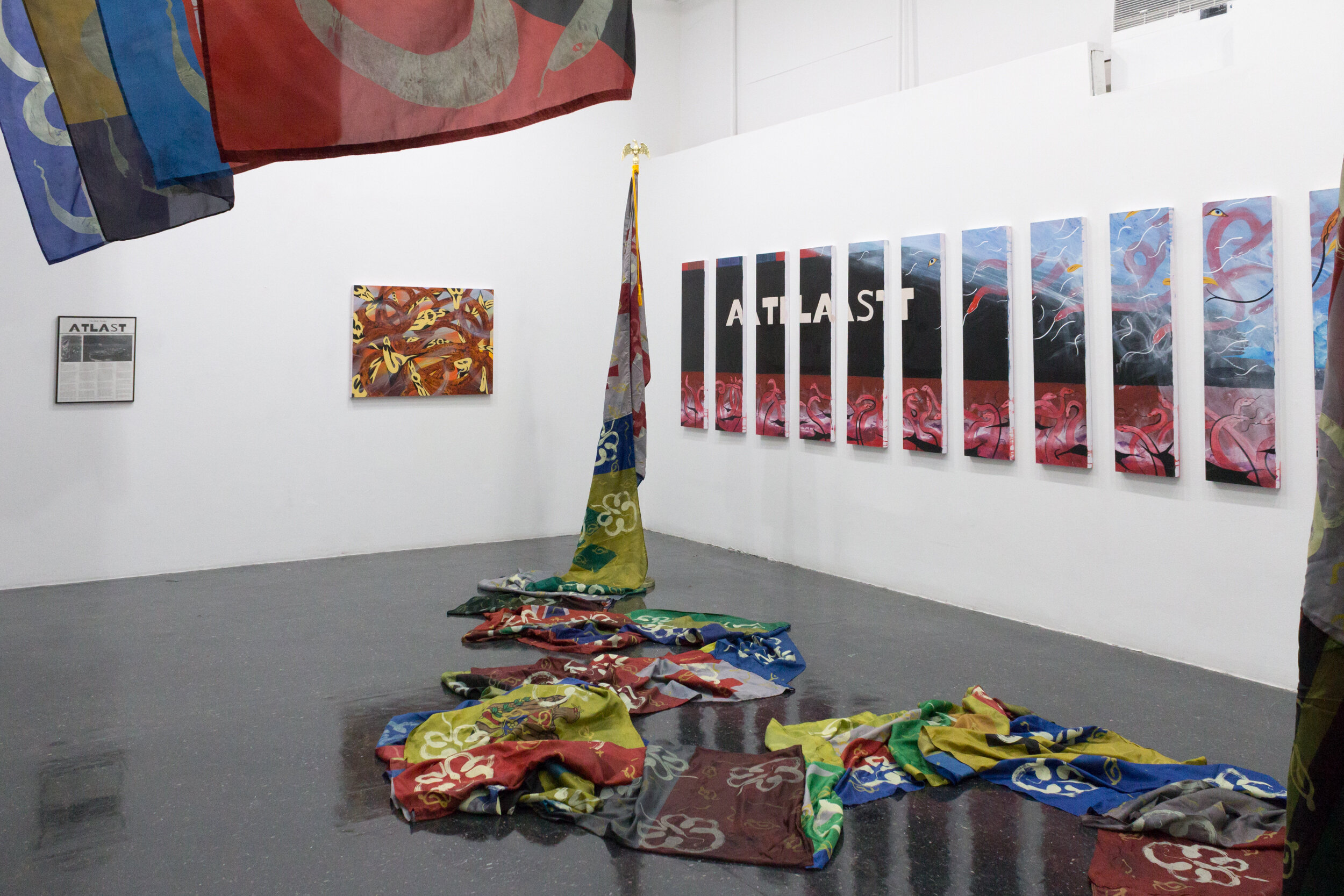
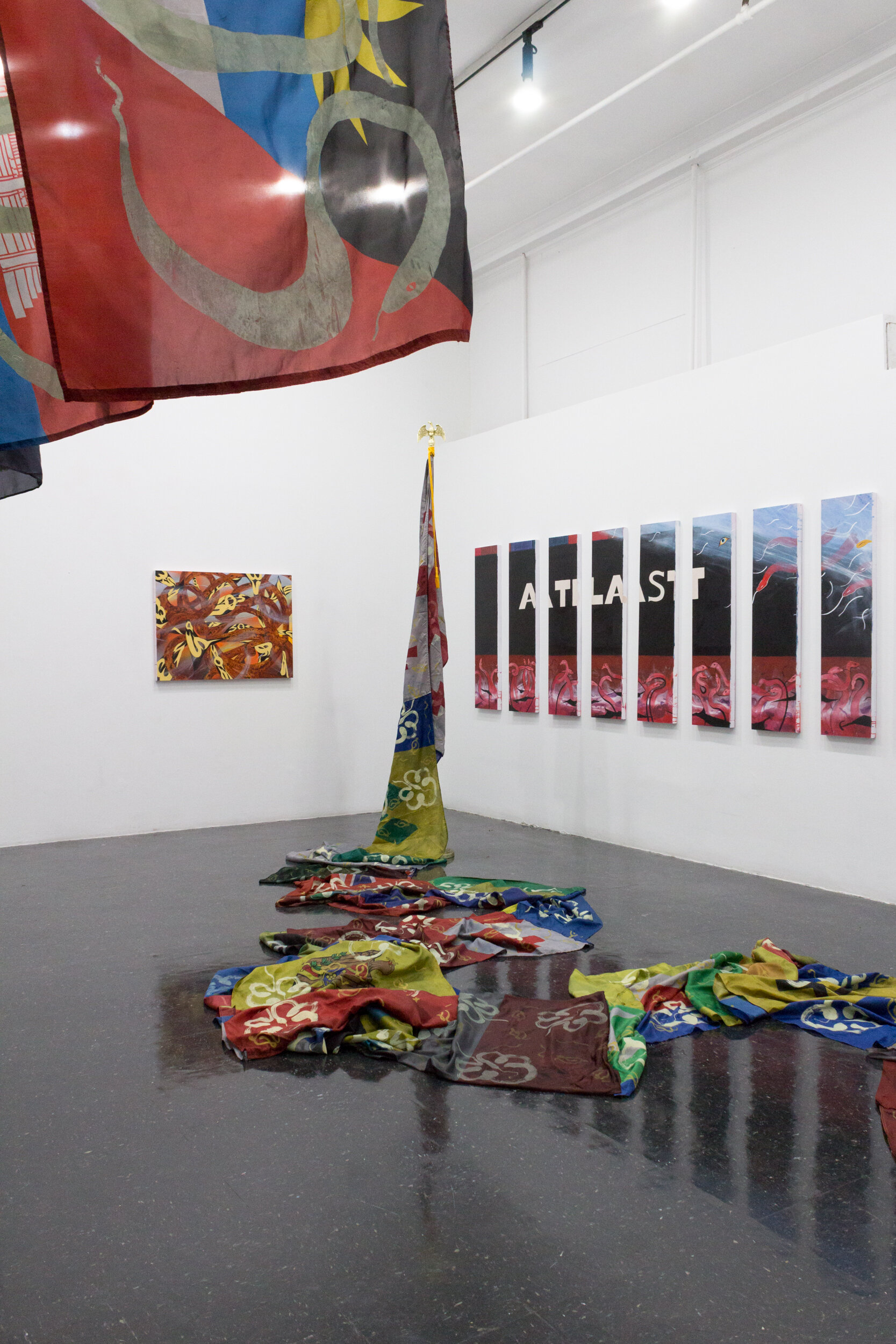
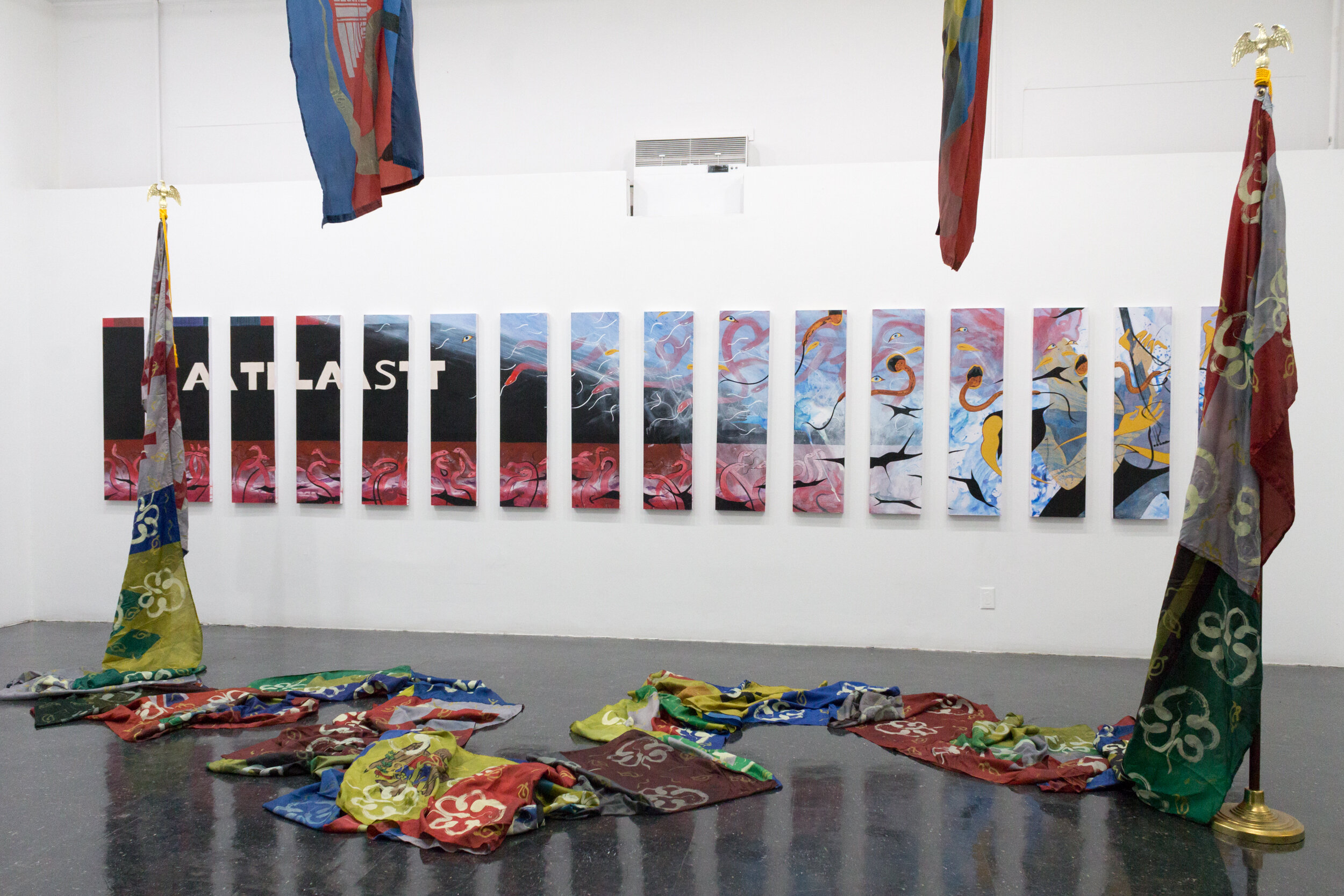
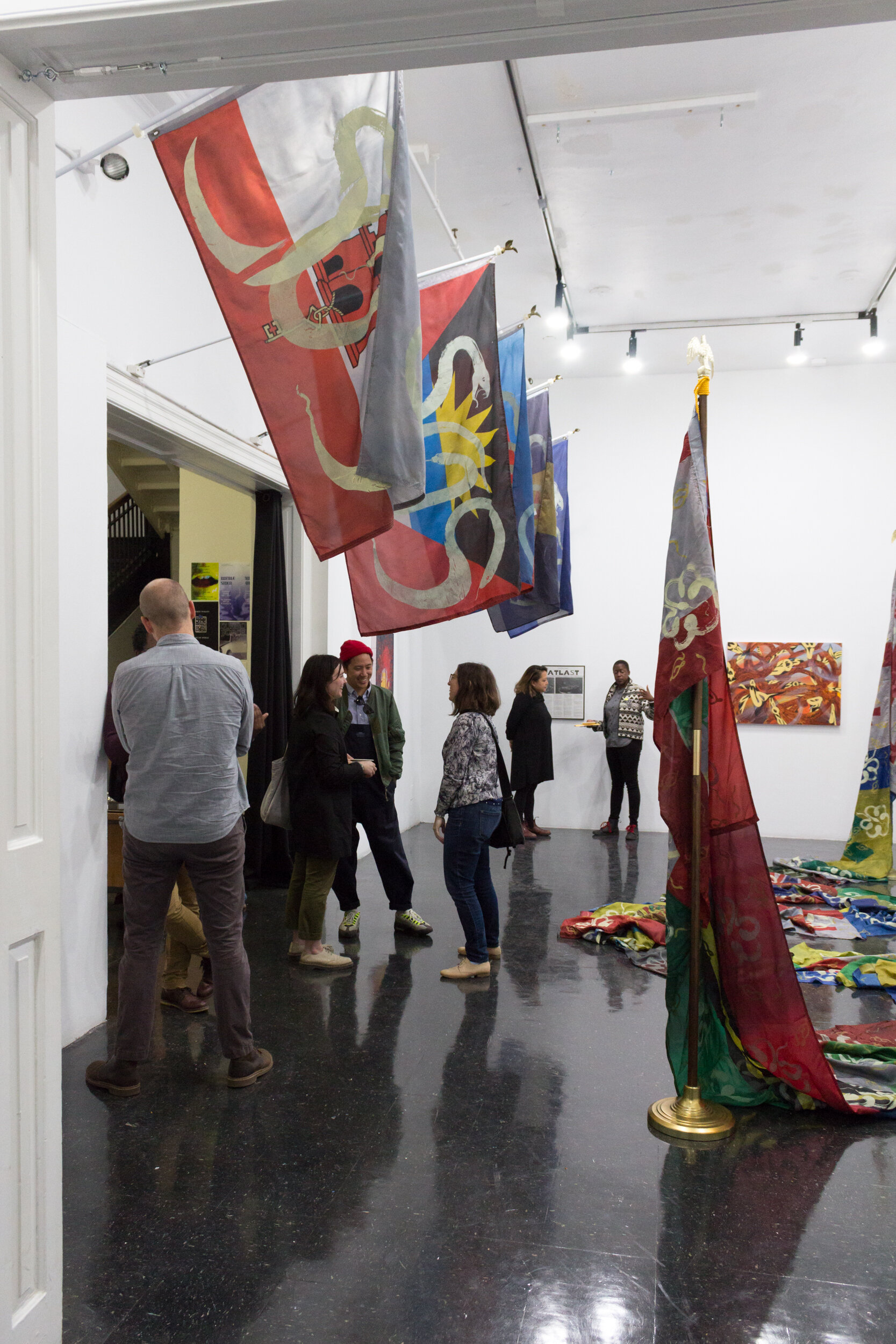

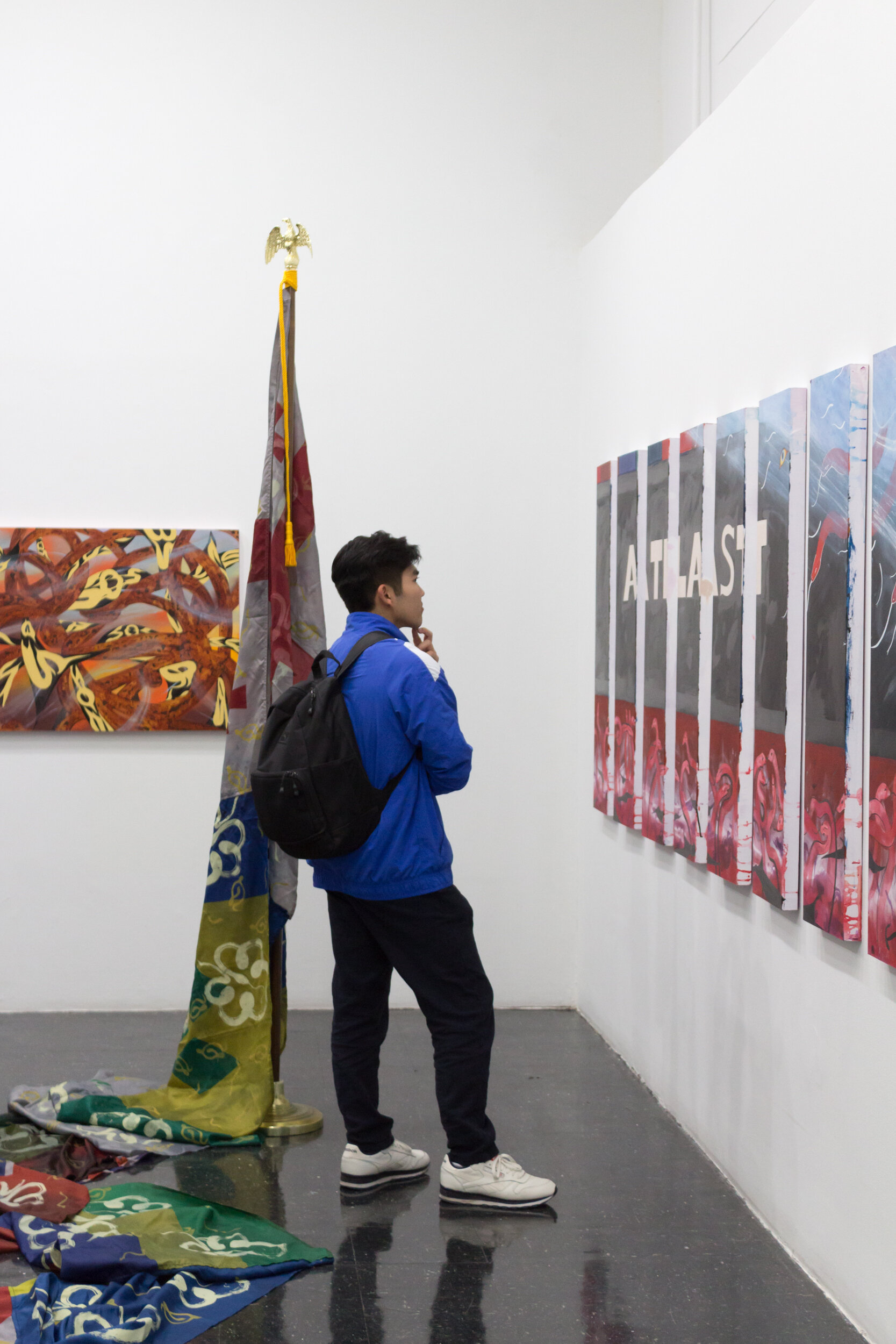
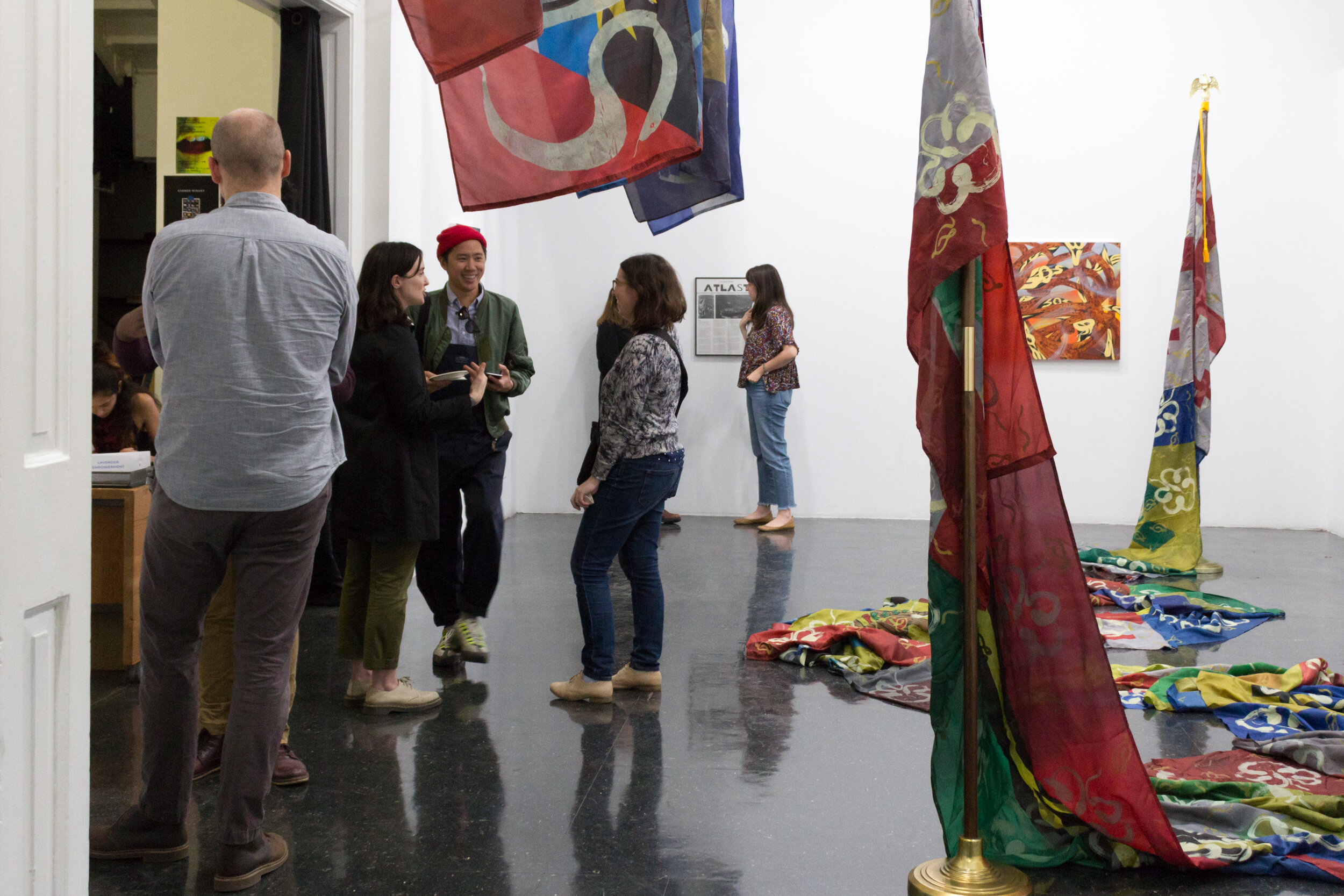

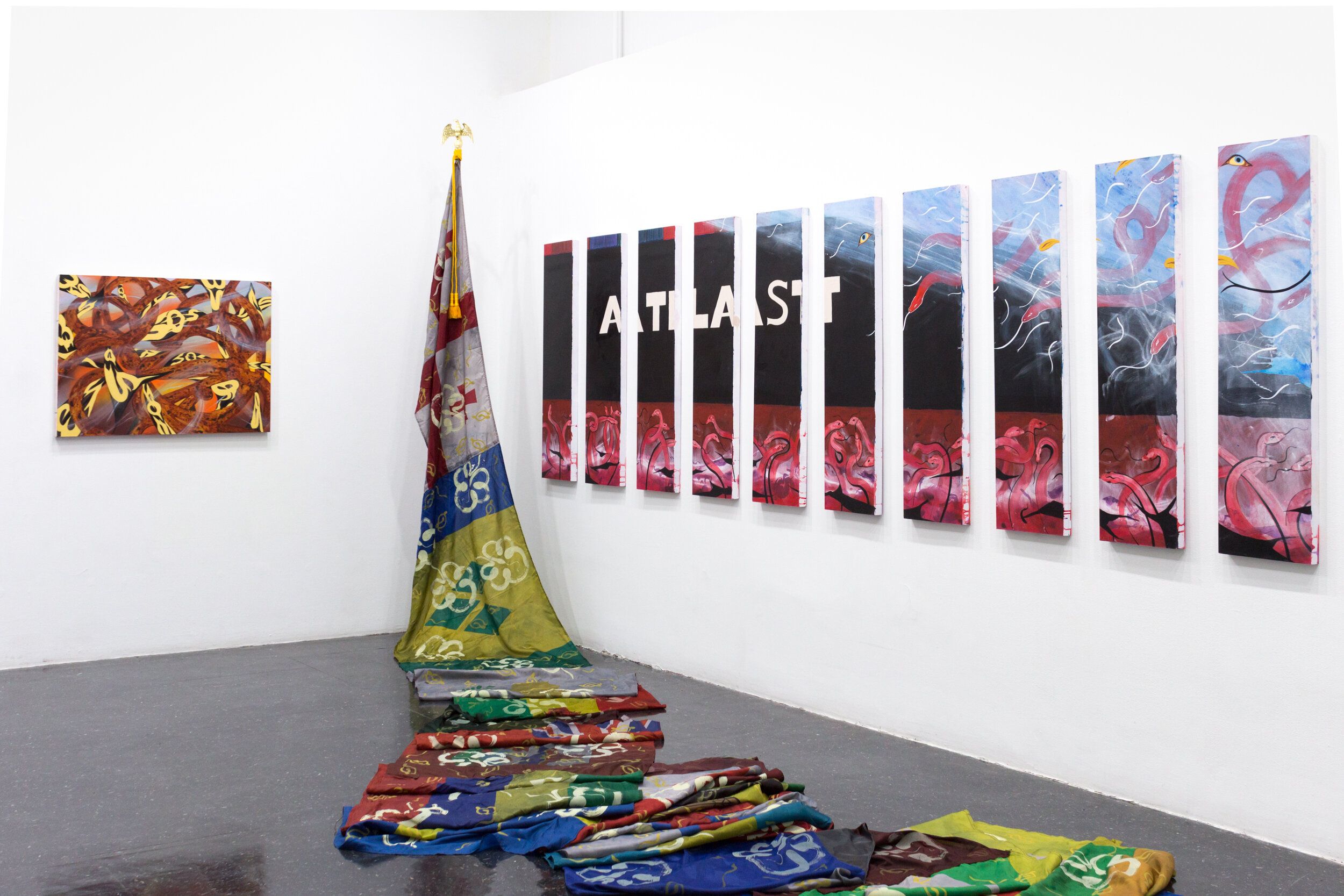
The following essay was written for the catalog of “The Ship Named Atlast”…
Mare Cognitum, for Tammy
by Emmy Catedral
February 5, 2019
New York City / 6:18 AM
A Gorgon, 2019
The word Atlas conjures for me these days a gridded Earth, navigational charts, spiral bound booklets before GPS systems, our partitioned planet. Even our modern constellations are delineated by official boundary lines determined by the International Astronomical Union, despite the collapse of these star distances beyond our point in space—a ‘beyond’ that’s designated as terra nullius, or ‘nobody’s land.’ By “international law,” for example, other planets and moons cannot be claimed by any nations or corporations under the principle of the “Common Heritage of Mankind.”
It is the Lunar New Year. The just-rising moon will be invisible to us as it passes between the earth and sun. Its craters are still named as maria—plural for mare, or seas—a term inherited and never corrected from the early accounts of astronomers mistaking the craters for bodies of water. There is one ocean, several lakes, marshes and bays. Here the seas are named after temperaments, or human states of being: Mare Cognitum (coming to know, recognize); Mare Ingenii (cleverness); the Sea of Tranquility and its opposite, the Sea of Crises, all on the surface of the satellite body pulling the tides of our own seas, seas subject to Earth’s international and territorial laws.
Do you have a flag? asks the comedian Eddie Izzard in drag, in a skit about countries being formed and claimed through the “cunning use of flags.” I think of Far & Away, a movie from 1992, which stars Tom Cruise and Nicole Kidman. It is a romantic drama that takes the characters to the Land Run of 1893. Irish immigrants are drawn together and towards what is now eastern Oklahoma by the promise of “free land” (which actually belonged to the Cherokee Nation). From what I recall, the final epic scenes see Tom and Nicole making a run for it, carrying their stake flags to claim their ground, cementing their and America’s Manifest Destiny.
Tammy’s use of Flags of Convenience (FOC) in this work brings forth a consideration of flags that subverts the imposition of a national cause onto the image of a flag, and advocates instead for the nationalization of a fluid world. It is a tale as old as time: the insistence of state ownership and control of realities that have no fixed shape. You have a vessel? You better register it under one of these countries in order to continue operations. Even Aquarius Dignitus, a refugee rescue vessel on the Mediterranean, presently awaits a new flag under which to operate.
What of flags meant to move, flags allowing for mobility on seas that appear to be the only exit from lands of crises towards freedom? What of the temporary flags on floral patterned bed linens used by the Vietnamese refugees as a means of survival? Tammy re-appropriates these FOC’s: an S.O.S. with white paint emblazoned over national flags, fabric under the urgent signal thinly dulled by dye.
SOS, 2019
It came as no surprise when I learned that a ‘flag of convenience’ can also refer to a business strategy of nominally claiming one state or country while physically based in another, or nowhere in particular. There have been several cases of TV stations transmitting signals to one place while registered under the laws of another.
The term S.O.S. is from the original morse code signal for distress, a telegraphic signal sent through electric currents. The use of flags as means of communication across a distance is a long practiced optical telegraphy. Tammy applies that functionality here, with national symbols receding as background. The flags are not meant as a means to claim, but semaphores from the Greek sema, sign, and phero, to bear.
”I think that the sea should sound a lot like freedom, but I don’t think it does. “
- Tammy Nguyen
Tammy writes of what the sounds of freedom must have sounded like to her parents: American Rock and Roll played by American Soldiers. I think of air waves transmitting The Voice of America all over the world, reaching as far as Burma, Vietnam, and the Philippines. Signals through the air waves promising new lives as shiny as the patriotic flag pole eagles: from sea to shining sea.
I end for now with another story of freedom: A Spanish fleet bearing its flags brought Magellan to the the island of Cebu and toward his death. It’s believed to be the first account of Filipino native resistance towards the conquistadors. Magellan brought with him a South East Asian slave named Enrique de Malacca, a person of language and communication, a translator of Magellan's who understood the dialect of the people of Mindanao. Despite slavery and Magellan's death at the hands of Chieftain Lapu-Lapu, Enrique is believed to be among the firsts to have circumnavigated the earth under the flags of Magellan’s fleet. It went through Butuan, where the natives built and traded with ships known as balanghais/balangays. The dig site of the most intact balangay boats is in Butuan, where the word developed into defining small townships and communities. Balangay thus became barangay. The word for boat became the word for village. A notion of communities that can be carried across waters as needed to survive, vessels as free as air waves bearing stories, and as Medusa’s serpents transformed into regenerative coral, the vessels upon finding ground take on multi-forms--as with these works by Tammy Nguyen in the room where you may be reading this text.
Emmy Catedral is a Butuan-born artist working in sculpture, performance, and printed matter. She also presents work as The Explorers Club of Enrique de Malacca and The Amateur Astronomers Society of Voorhees. She is co-founder of The Pilipinx American Library and sometimes plays music in empty bars as DJ Pers Lab.
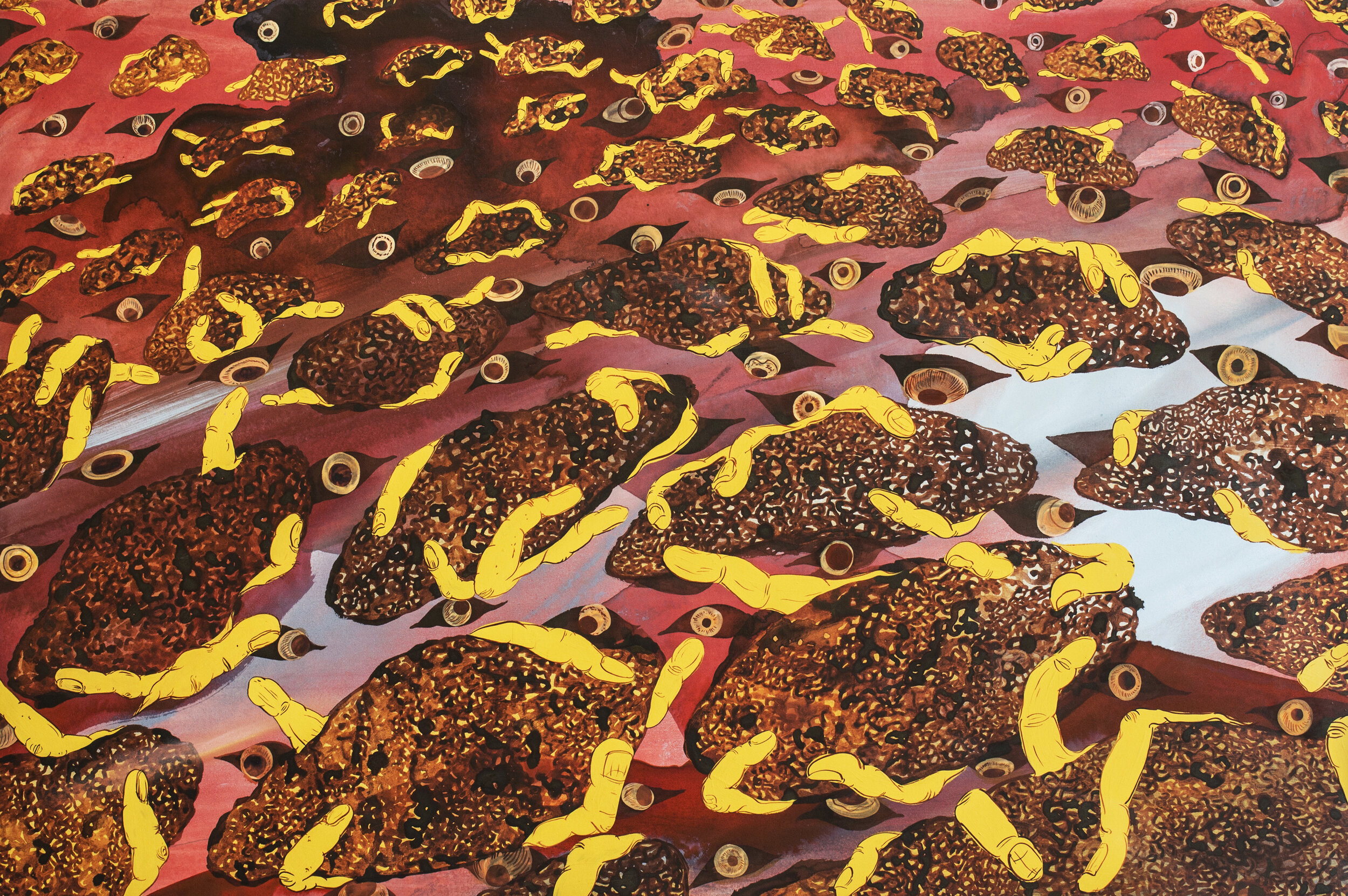


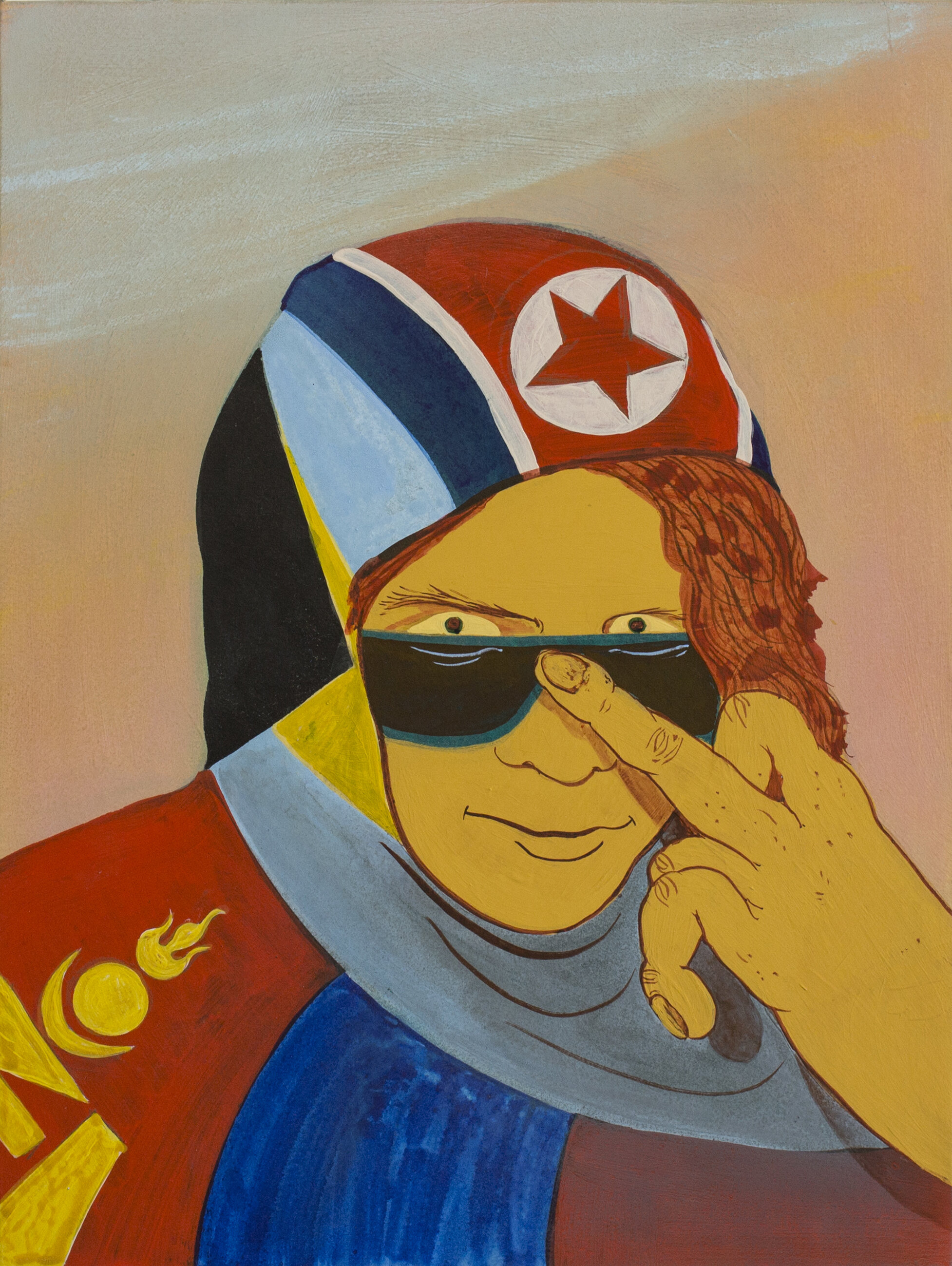
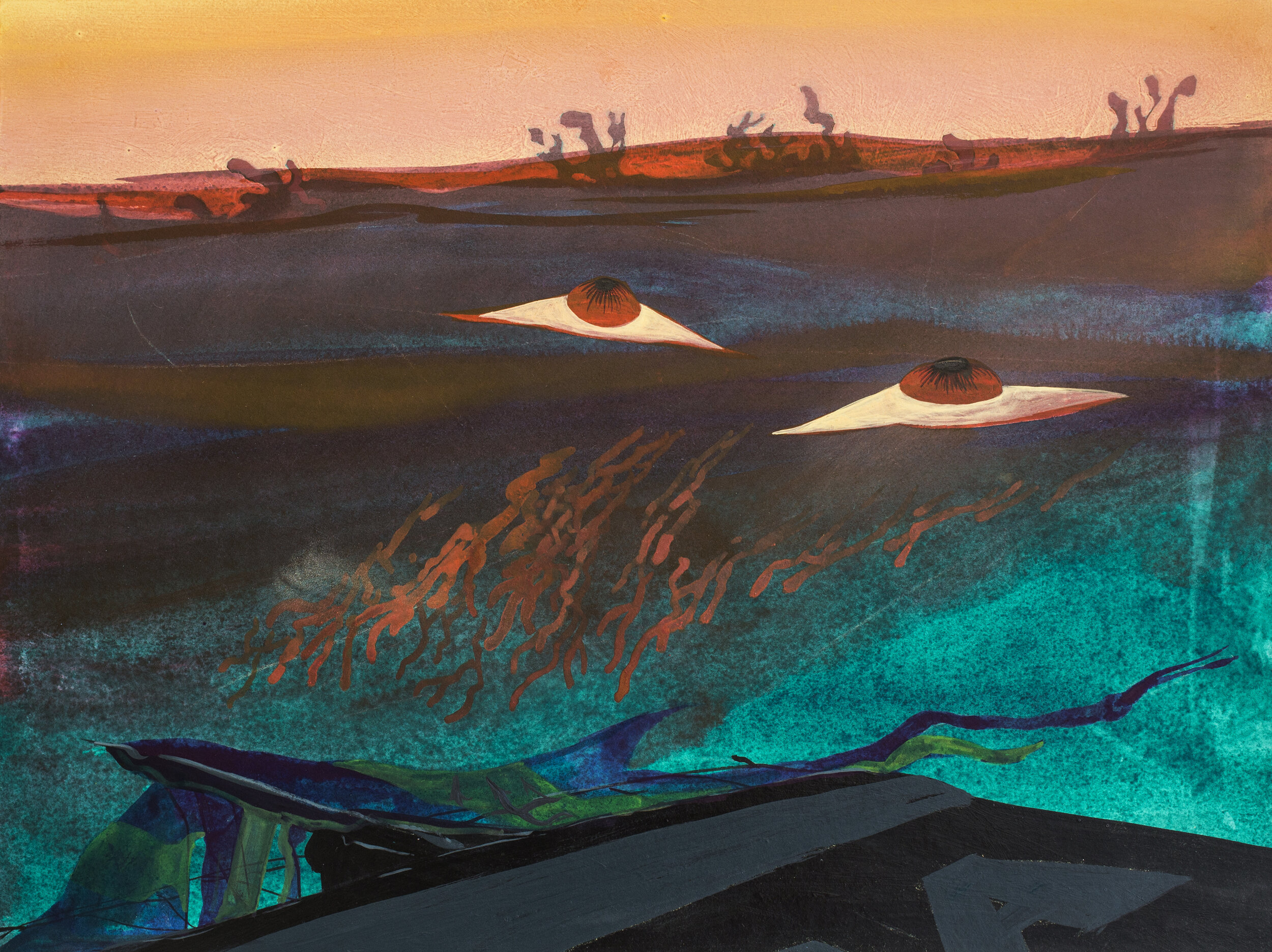
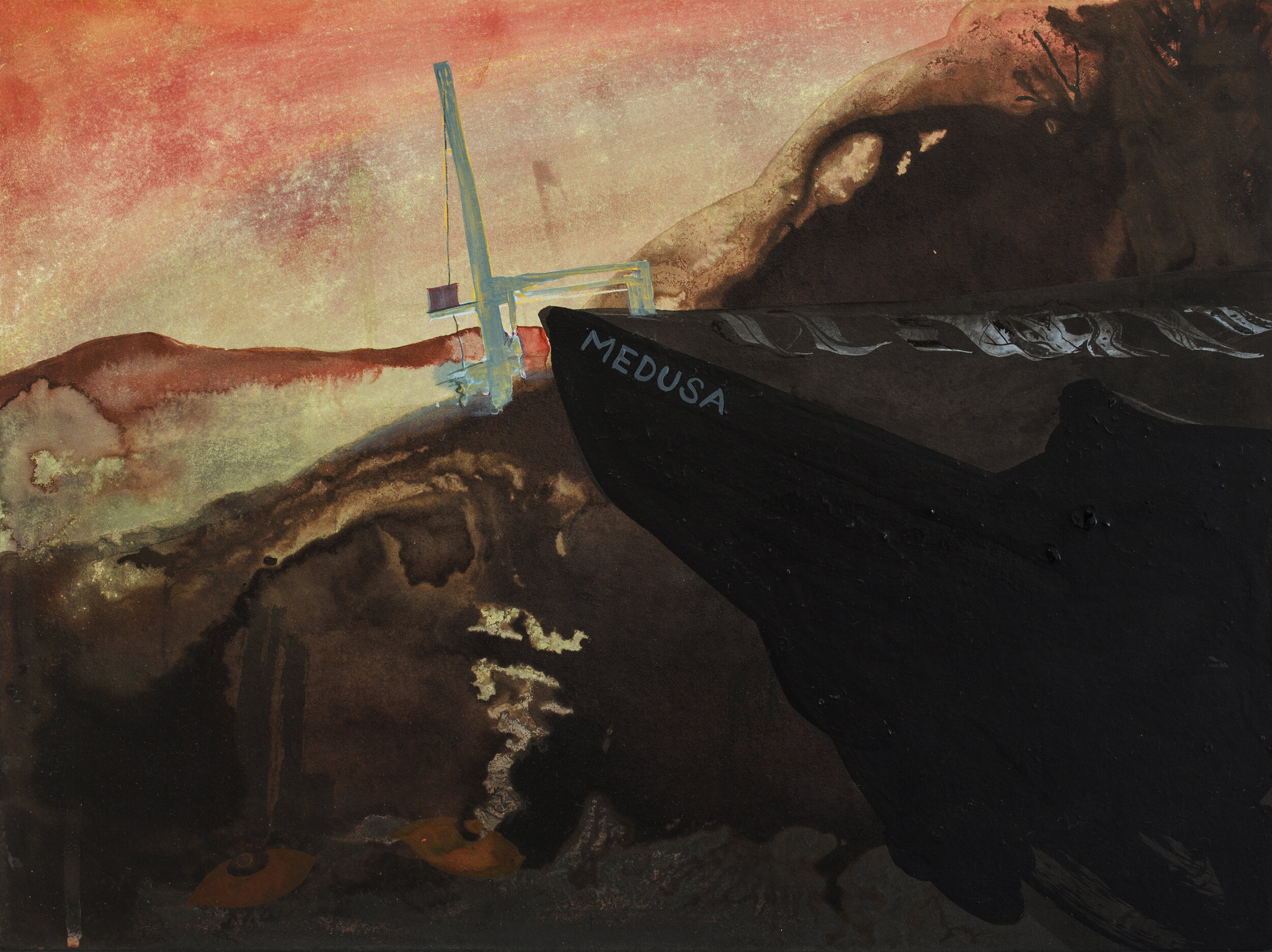
The Straits
“The Straits” was the precursor story that led to “The Ship Named Atlast”. It was a series of paintings and a takeaway newspaper which was exhibited at the Mariboe Gallery at the Peddie School in New Jersey.
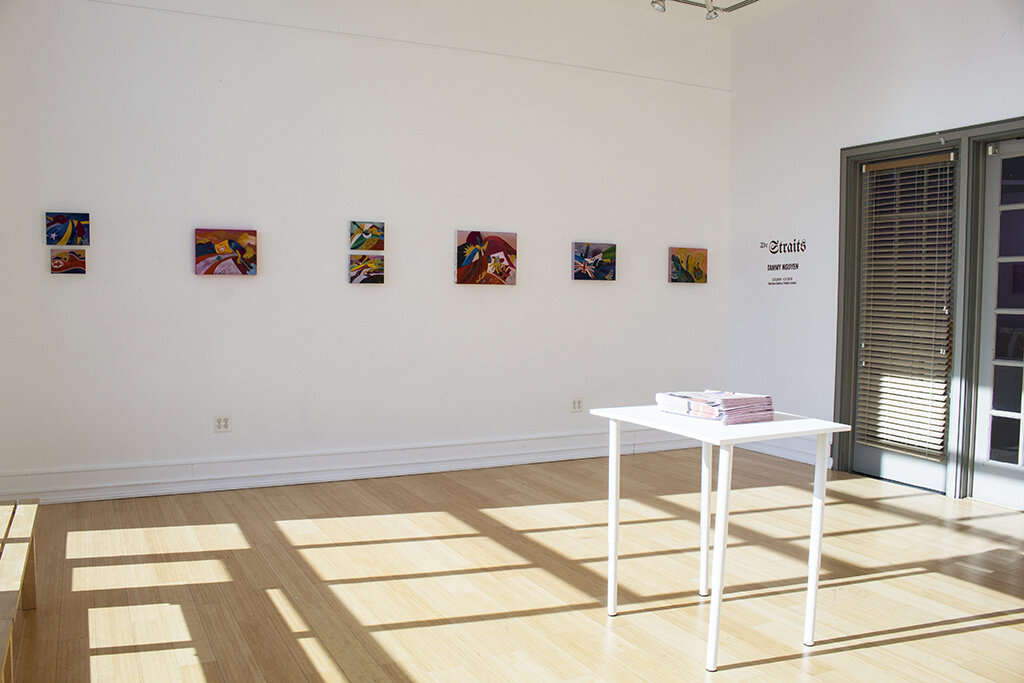
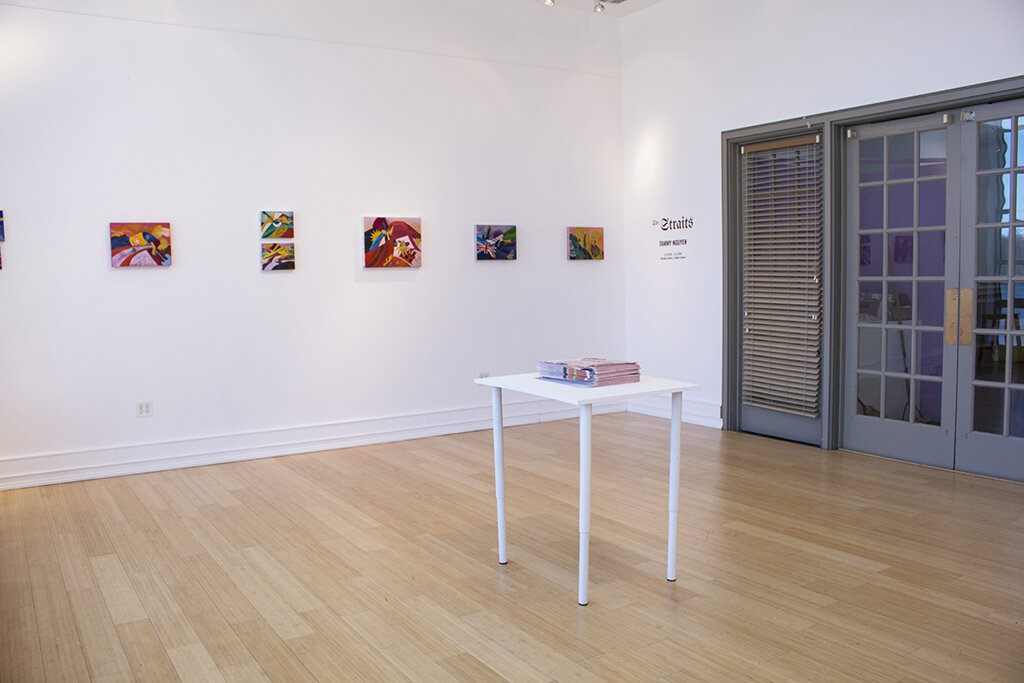
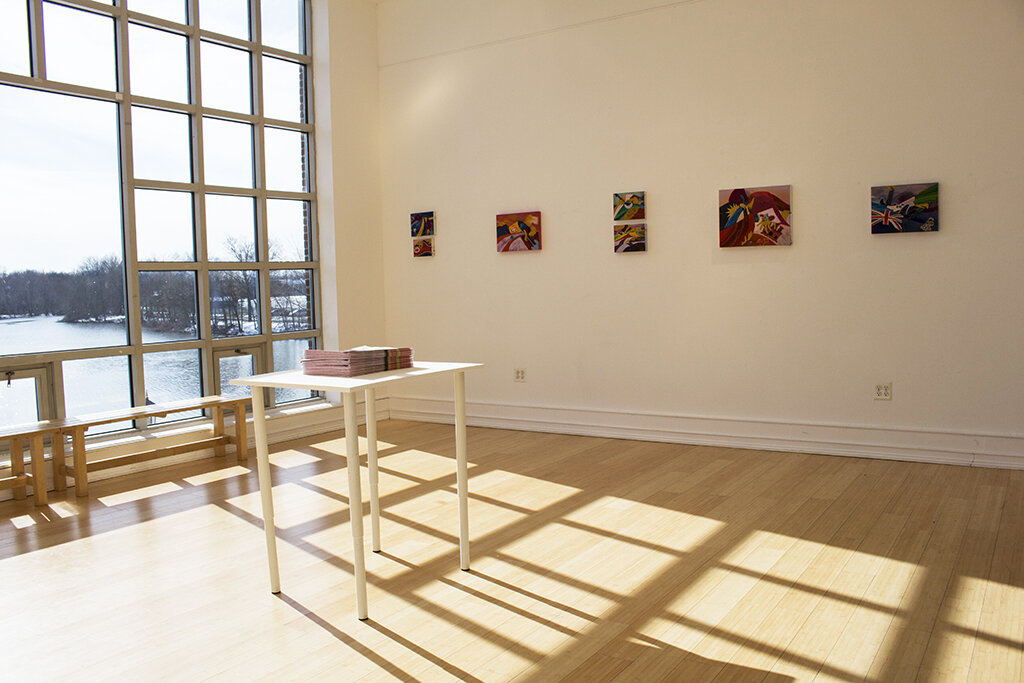


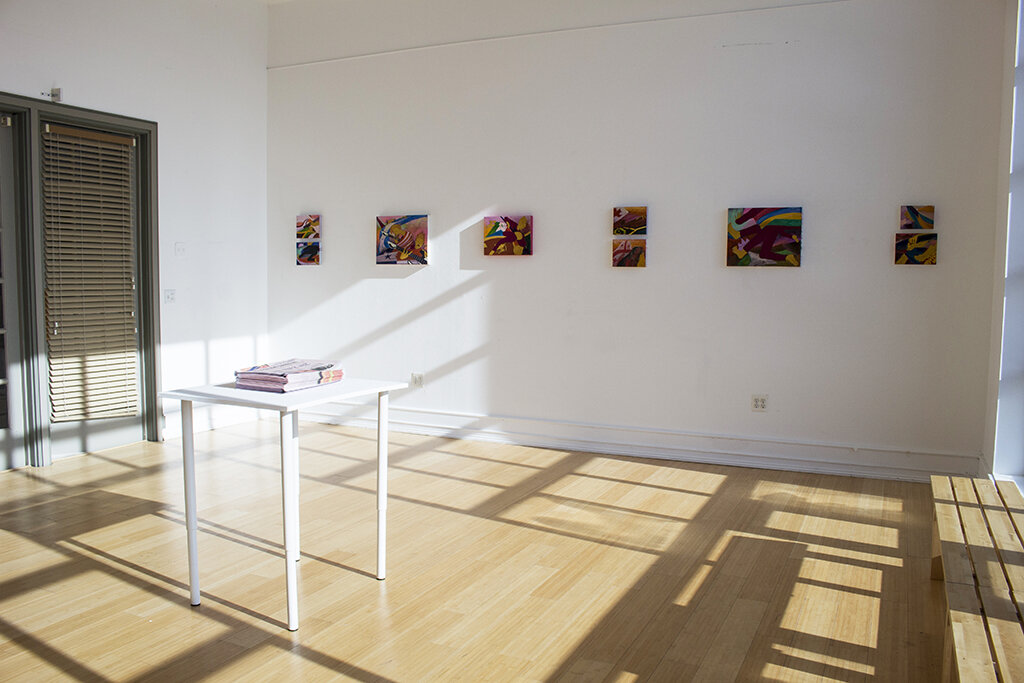
The Staits Spotted at Sea
Singapore—
For some time now, the people living on the shore would hear shrieking coming from the sea. During thunder and lighting storms, these cries and wails would echo into the center of the land and wake up those doing nothing or napping.
On an ordinary morning awakened with an abnormally pink-purple sky, a young person swam after something he saw in the water. The water was warm and calm, so he kept chasing this thing in the water to an area of the sea he had never swam before.
Curacao, 2018
Treading, a colorful rectangular piece of fabric floated towards him and wrapped around his body like an arm. The fabric made of red, yellow, white, and green stripes carried the young person in its cradle to another area of the sea where there were more rectangular pieces of fabric. Here, though, they coiled around each other. Some of them had emblems of an ancient bird the young person had heard about called Eagle. Other fabrics had a giant cat that the young person knew had ruled the ancient jungles. Many of the fabrics were decorated with stars, some of them had five blue stars, another had four white stars, and another with only two white stars.
Then, all of the fabrics rose at the same time, and ochre colored Things rose from the water, each holding with something that the young person could only describe as a kind of a paddle. This paddle that the Things held diagonally from their chest down to their hips had a long flat neck and a cloud-shaped paddle. Strings connected the tip of the flat neck to the bottom of the cloud-shaped paddle. When the Things wiggled their fingers on the flat neck and moved the strings around the cloud-shaped paddle, the paddle made a shrieking, crying, and wailing sound that filled the young person’s chest with air.
The sound was different up close. It vibrated and made the water ripple.
The Thing’s ochre skin was wrinkled with salt. The Thing’s skin was covered with dots and hairs. The Thing’s face looked like this young person, but it kept making faces, especially when the sounds were coming out of the paddle. The Thing didn’t say anything to the young person, it kept making sounds with the paddle.
Marshall Islands, 2018
When the young person swam back to shore, he sat next to some old people doing nothing and told them of everything he had saw in the unknown part of the sea.
The old people looked at each other and then all looked at the young person. Casually, an old person told the young person:
A long time ago, this sea was called the Strait of Malacca and it connected the entire planet. In this sea, these big floating machines called ships that would pass through. There were many kinds of ships. Some of them had triangular fabrics that allowed them to move quickly. Others, were loaded with red and blue rectangular boxes. Others were so small they only carried one of two humans. Some of them were just grey and carried another machine called airplane on top of them. Many of the ships, especially the large ones, had a large rectangular piece of fabric, like the ones you saw attached to its front end. This fabric was supposed to signal to the other ship where this ship was coming from, but this was not always the case.
The young person asked:
But why would it be important to know where the ships are from?
The old person continued:
Because on the ancient Earth, the humans divided up their land into nations. Here, we only have land and sea, but on the ancient Earth, you would not be able to see your father because he lives on a part of the land that would have been separated from where you sleep. On the ancient Earth, number also made the humans very powerful. Sometimes you could show how many numbers you have with pieces of paper, or metal, or plastic, or anything that could be assigned many numbers. The humans were also connected to their nations by a piece of paper that said that they were from that nation. This is important because it means that for all of the humans part of a nation, the more numbers that a human had, the more powerful that nation was.
Are you following the story? We don’t have that kind of system here, we only have land and sea.
The humans were good at a lot things, and when they had numbers, humans were able to be very creative. But, the one thing that humans never knew how to control was the sea.
The young person asked:
But you said that they had those machines called ships that could move through the water.
The old person clarified:
That’s one kind of control, but another kind of control I am explaining to you is a power control. Do you know what power is?
Jamaica, Cyprus, 2018
The young person looked empty-faced.
Well, on the ancient Earth, power was when a human or a nation would tell other humans of his nation or other nations what to do, many times because he had more numbers than the other. But humans of different nations had many different things that other humans of different nations would want. So there was a practice call trade that mostly happened along the sea. The ship would carry things that the humans of one nation would want to give to the humans of another nations in exchange for something they had. But as this practice developed, humans realized that some things could be worth more numbers than others. For example, there was a kind of metal called steel, that humans of all nations wanted because it was very strong and could be used to build anything. But, the steel nation did not need steel, they had so much, they needed other things from other nations. Those nations knew this so when the steel nation’s ship came to the shore of another nation, that nation would demand the steel nation to give up more numbers in order for them to get numbers back on their steel. As it became too difficult for the humans of steel nation to carry their steel to other nations, the steel nation realized that they could give up less numbers if they gave a few numbers to a less powerful nation. The steel nation could fly the rectangular fabric from the less powerful nation and when their ship arrives to its destination, they would not be have to give up as many numbers, because they are no longer steel nation, they are a less powerful nation.
This gets more complicated, young person. Do you want to hear more?
The young person looked at the old person wide-eyed.
These rectangular fabrics represented the humans of each nation. The humans had a very bad weakness of needing to belong to a nation and they wanted their nation to have as many numbers as possible. A nation’s numbers lived inside the meaning of the rectangular fabric and when the rectangular fabric was threatened, humans killed other humans.
So, when nations like steel nation used the flag of less powerful nations, the numbers of the rectangular fabrics changed, and the less powerful nations became less powerful and the humans became more and more bitter with each other.
Do you understand?
The young person understood, but then asked:
So, why do the ochre colored Things make such strange sounds with those flat shovels?
The old person answered:
Georgia, Germany, 2018
That is a good question, and now I will tell you about the most powerful nation of ancient Earth. It was called America, and America was a clever nation because it didn’t have real things that other humans of different nations wanted. Instead, America had a thing that it could spread across ancient Earth without the need of ships. It had a thing that could spread across ancient Earth by the things said by humans from any nation. America had something called a dream, and the dream was a story that was told in many ways, with the most successful way being music, sounds that the ancient humans made with numberless things.
At the end of the ancient Earth’s life, America had control of the planet by way of a dream it told the other humans. There were sounds that the humans of America made that made other humans want to be American. The sounds were made with their voices and those shovels that you saw. On the ancient Earth, this was called the electric guitar. When the humans of less powerful nations heard the sounds of the electric guitar, they could feel the American dream alive in their bones.
And so, as nations kept giving their things in exchange for other things, the humans of less powerful nations all started to make sounds with their own electric guitars so that their blood could be rushed with feelings of the American dream.
You see, young person, the American dream felt like another thing that humans desired. This thing is called freedom, and I can’t explain what that is to you, because we don’t have such a thing here. We sit on boundless lands and swim in endless seas for nothing.


